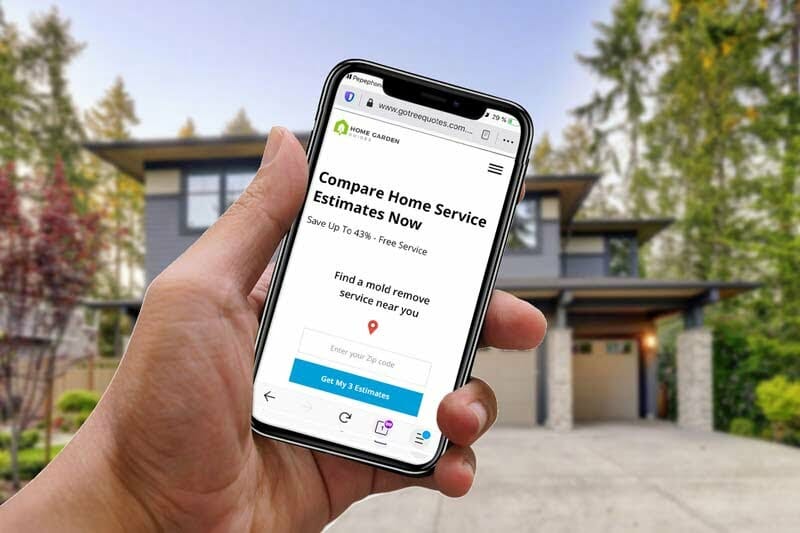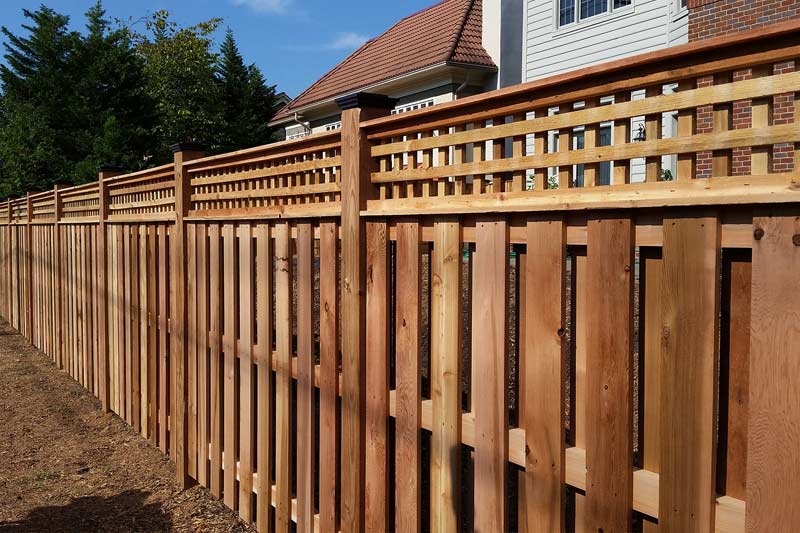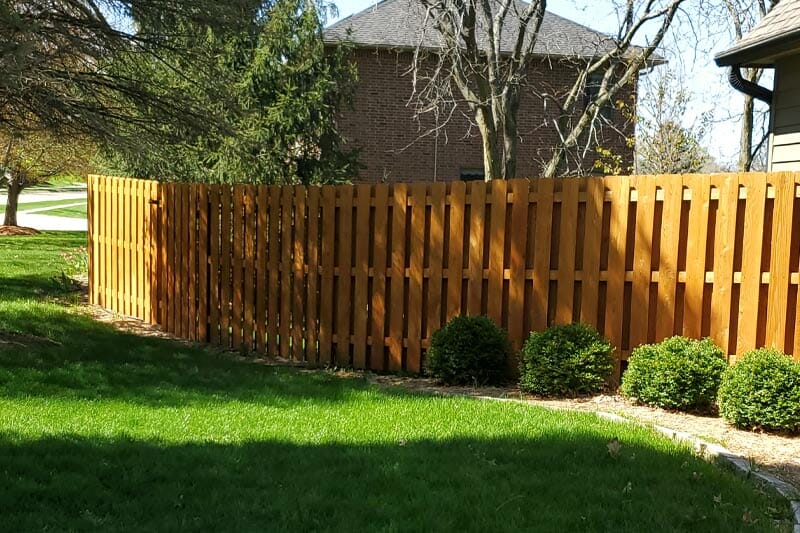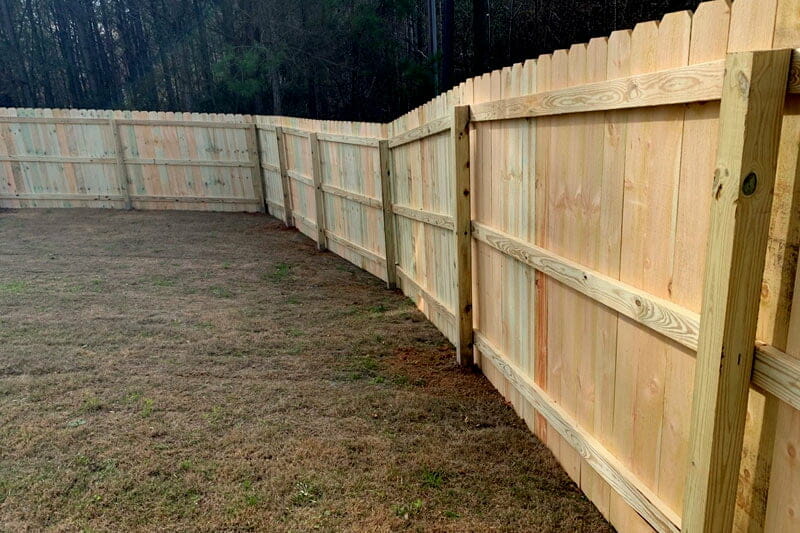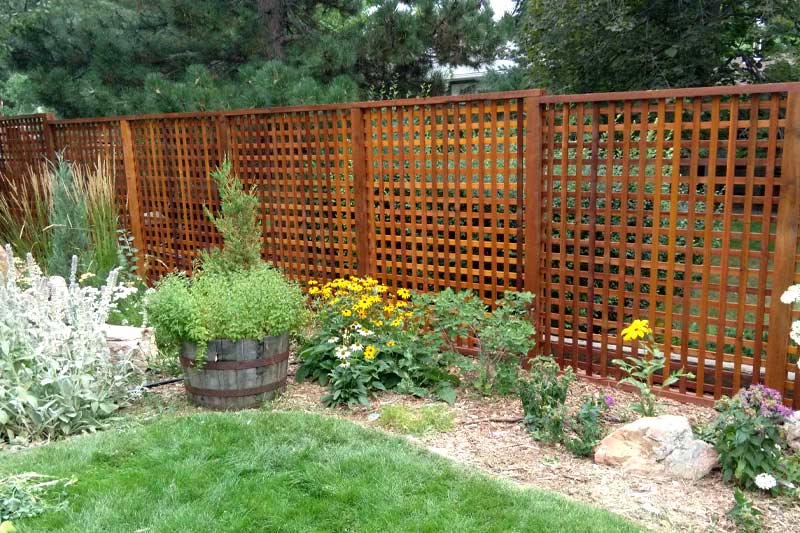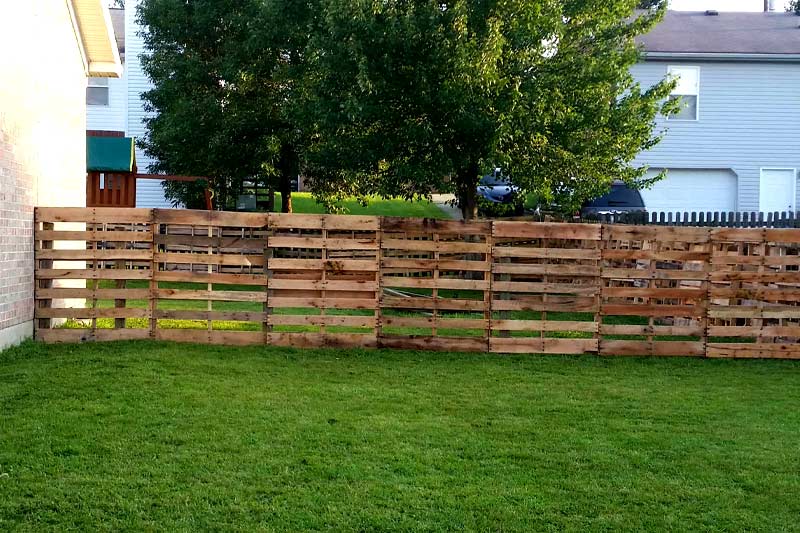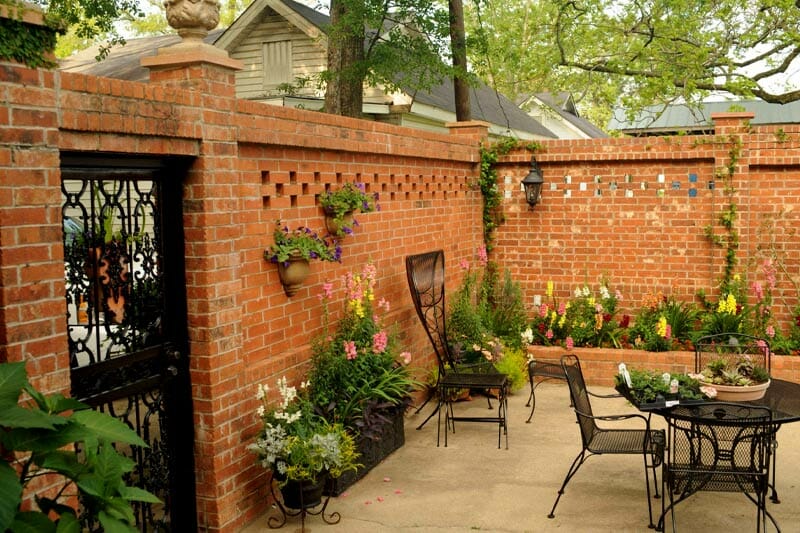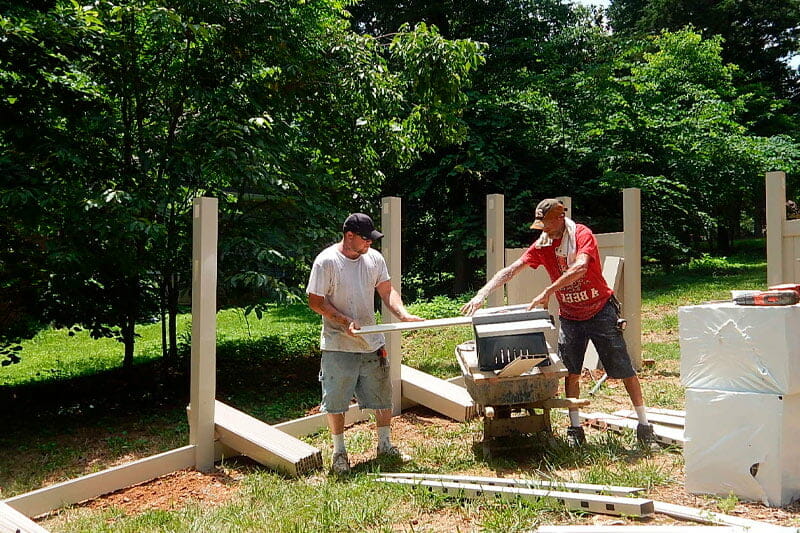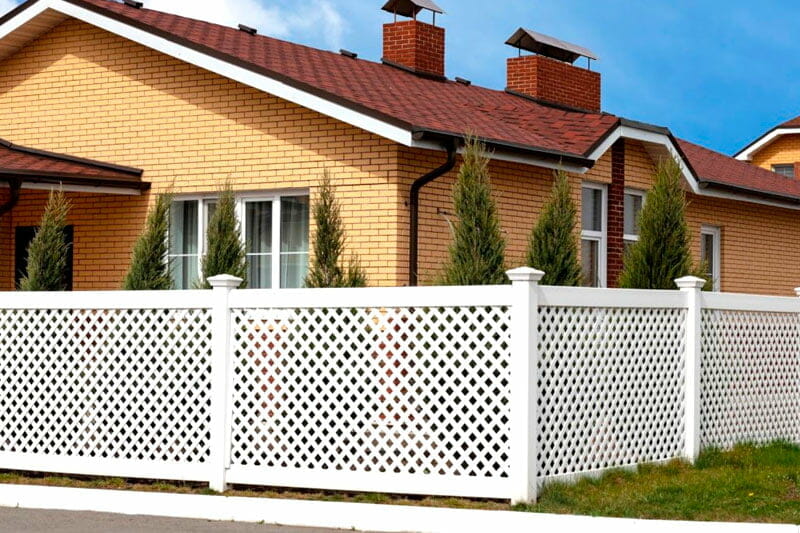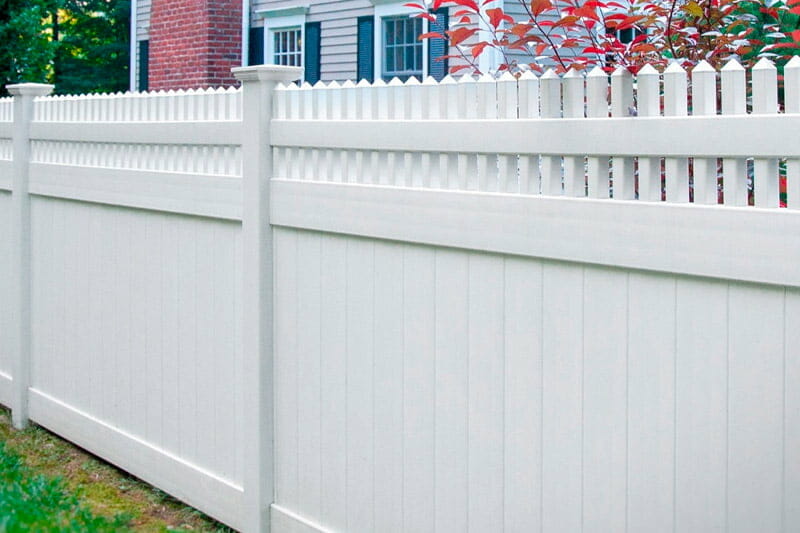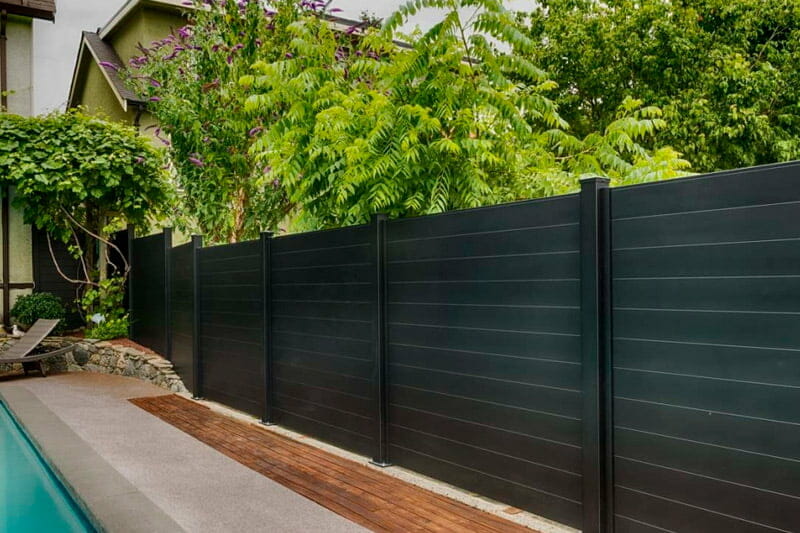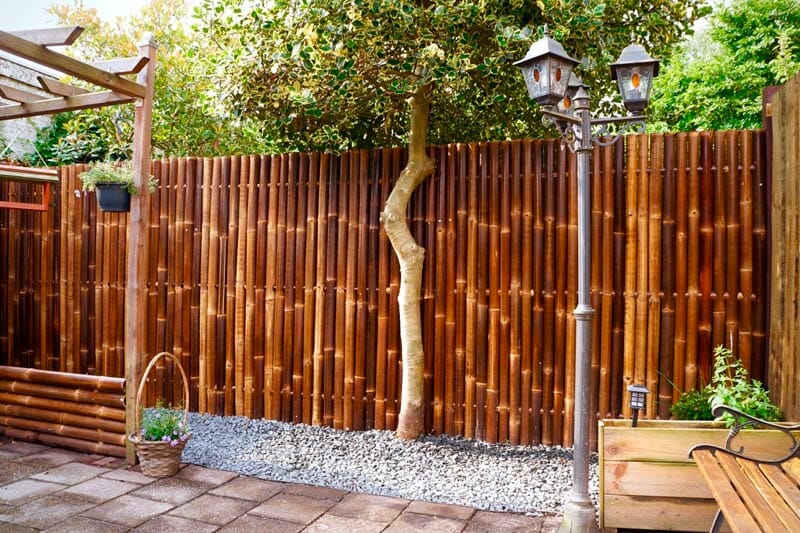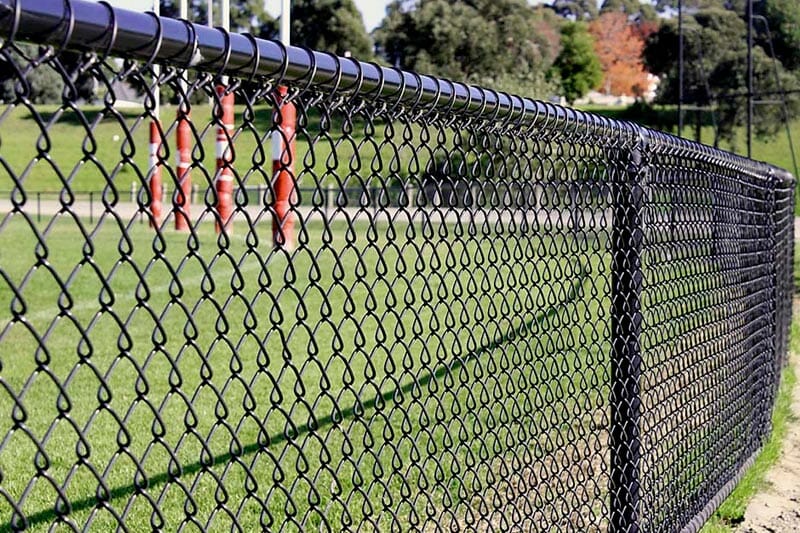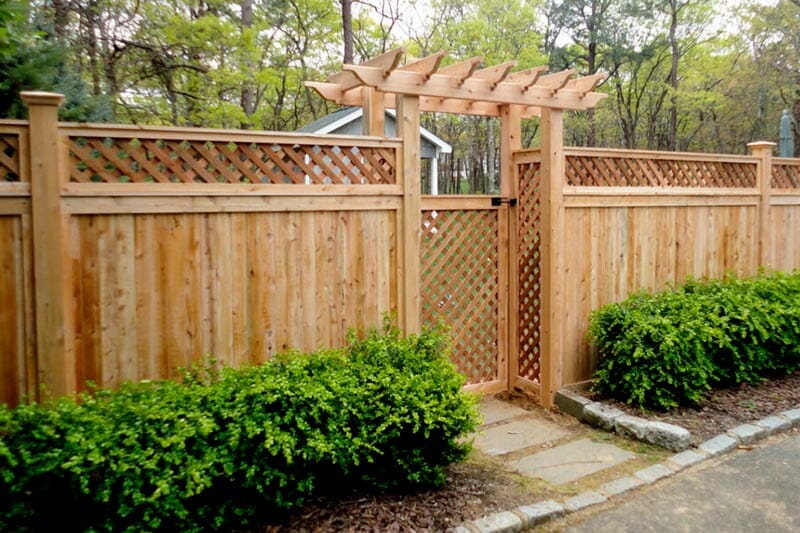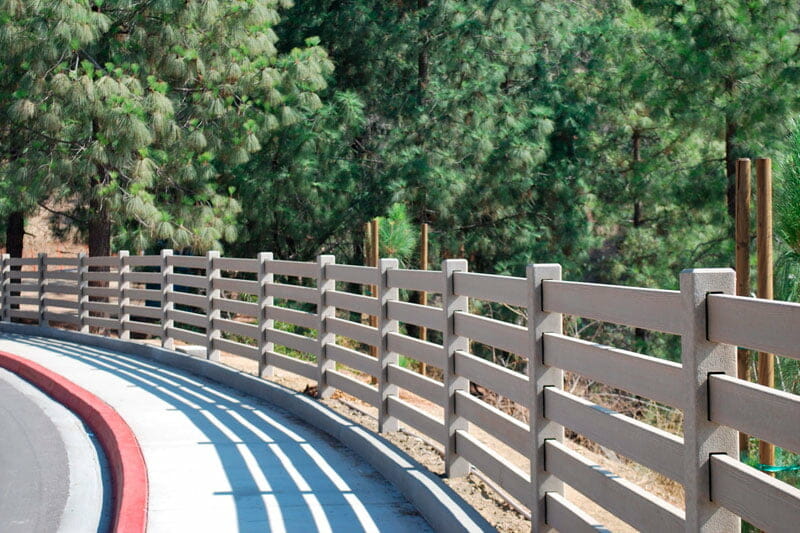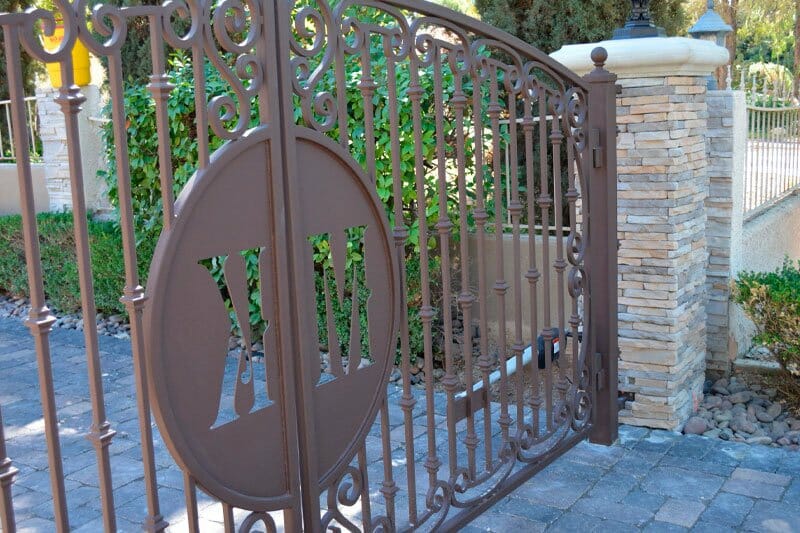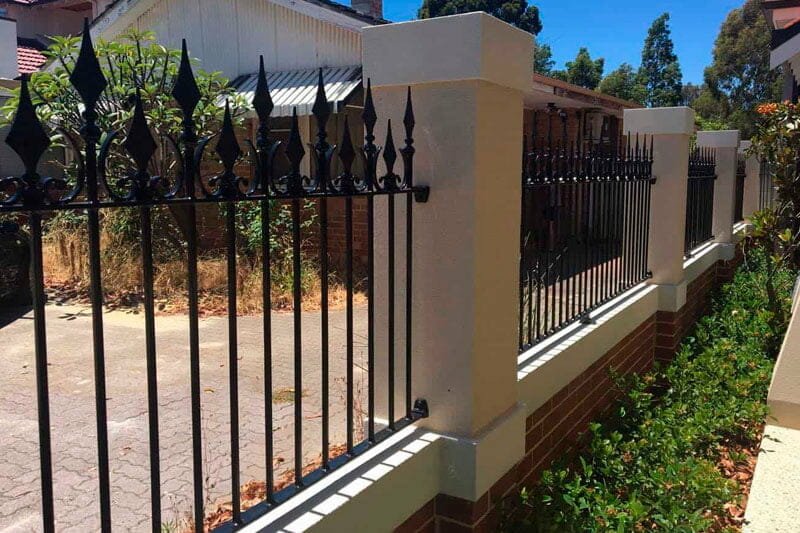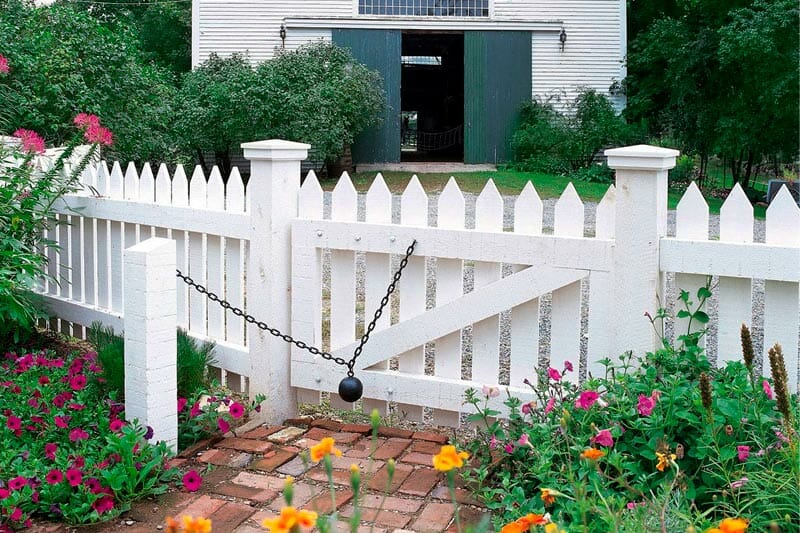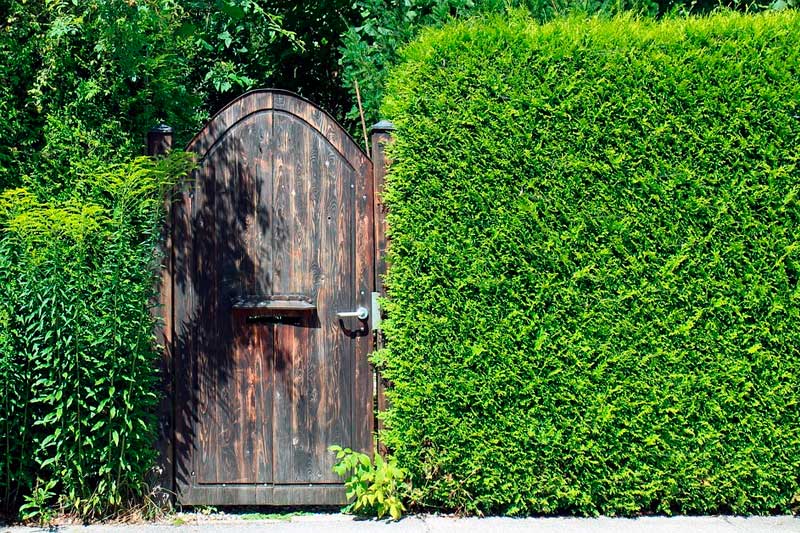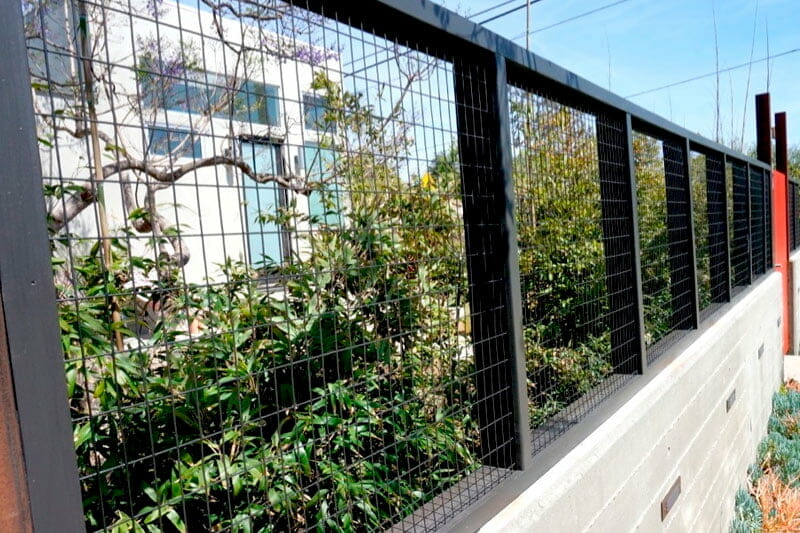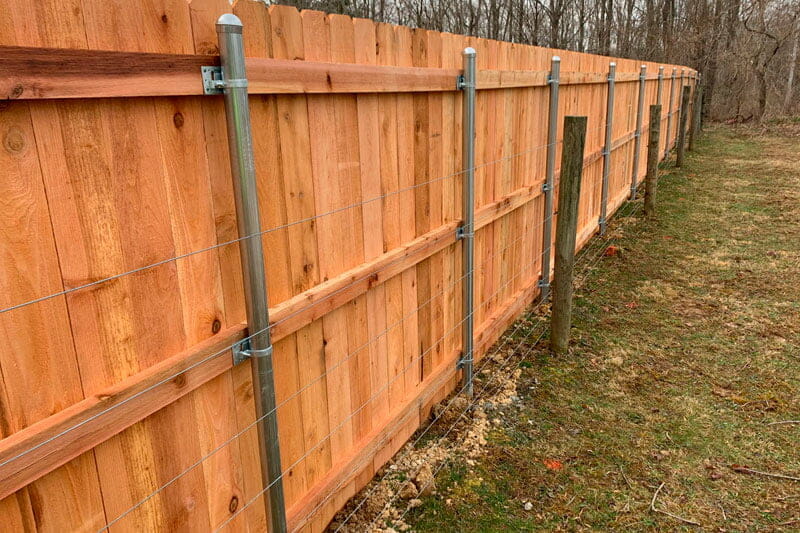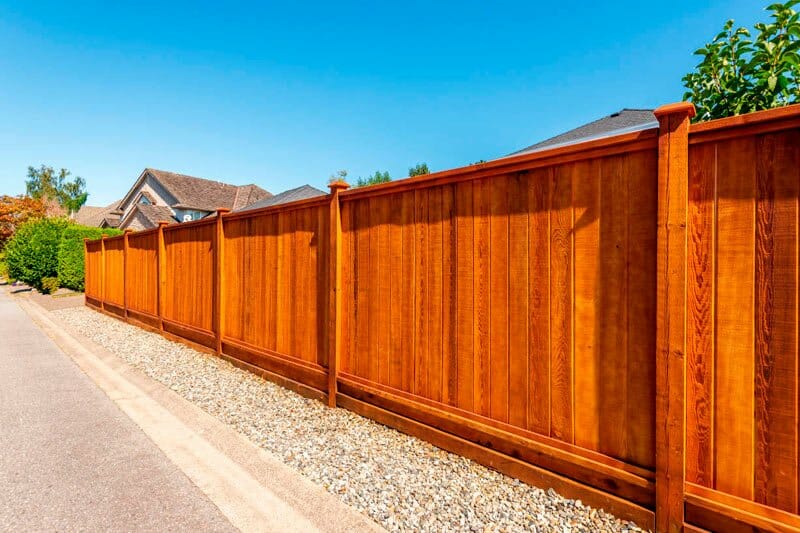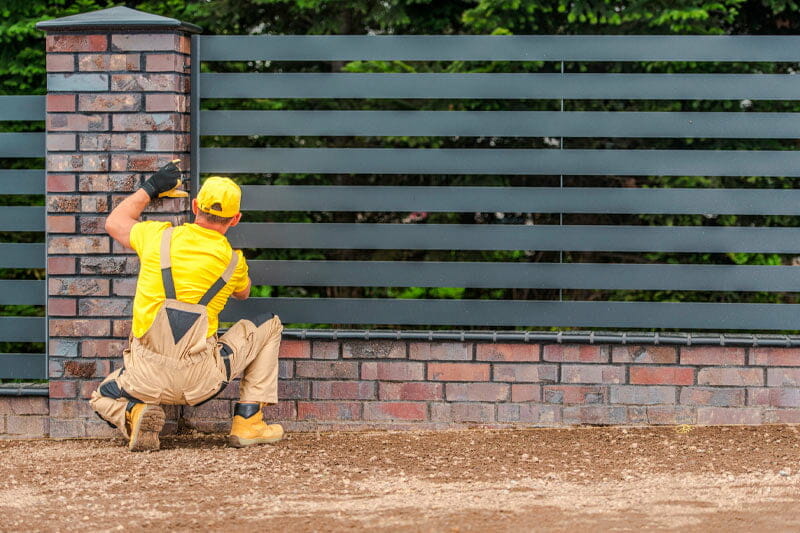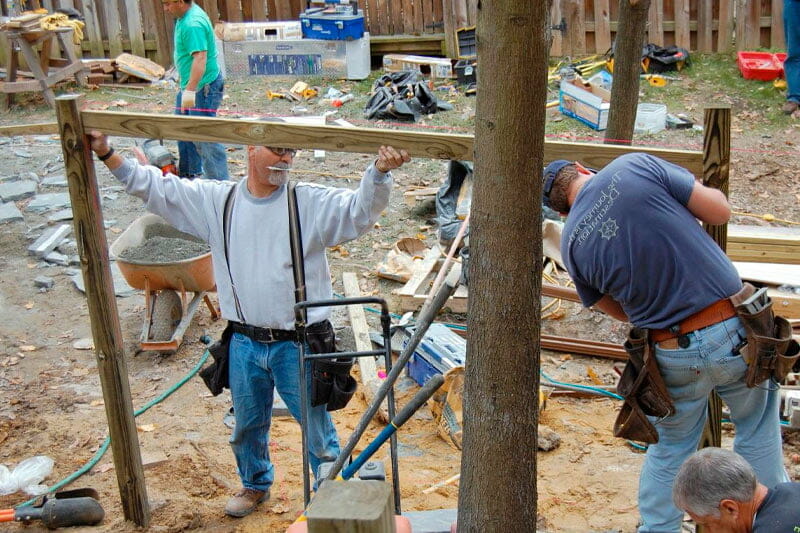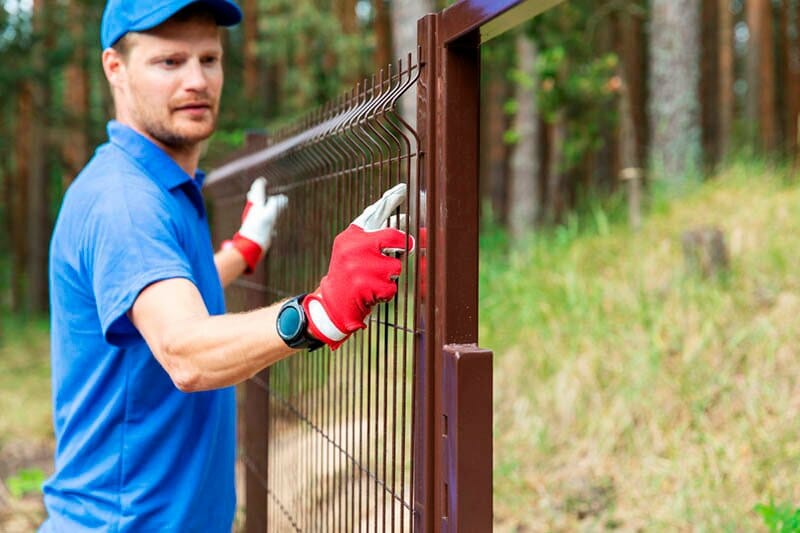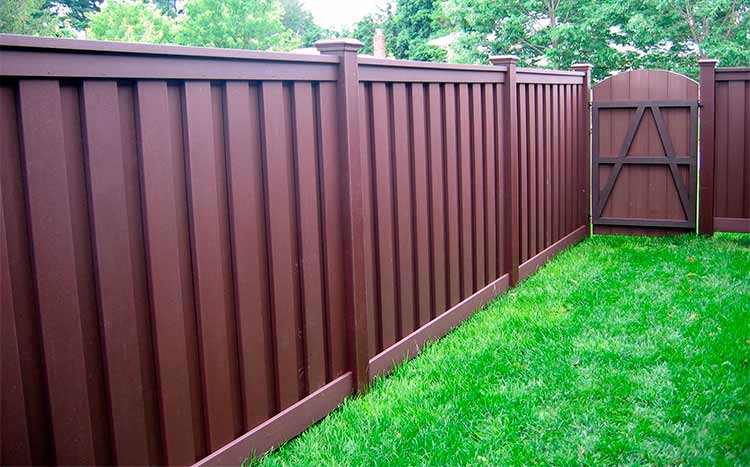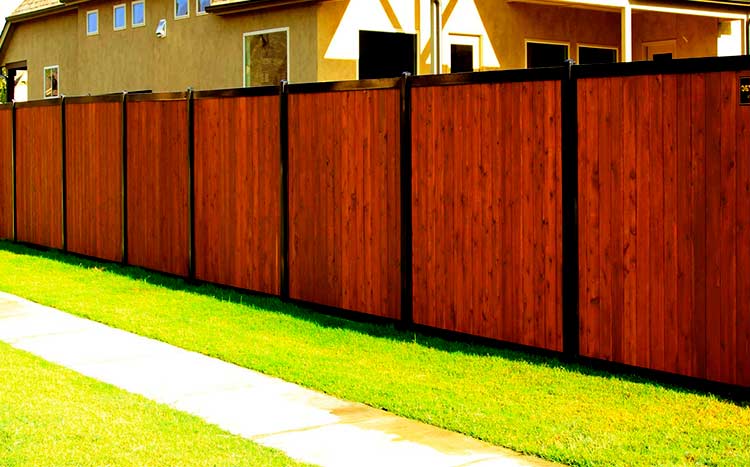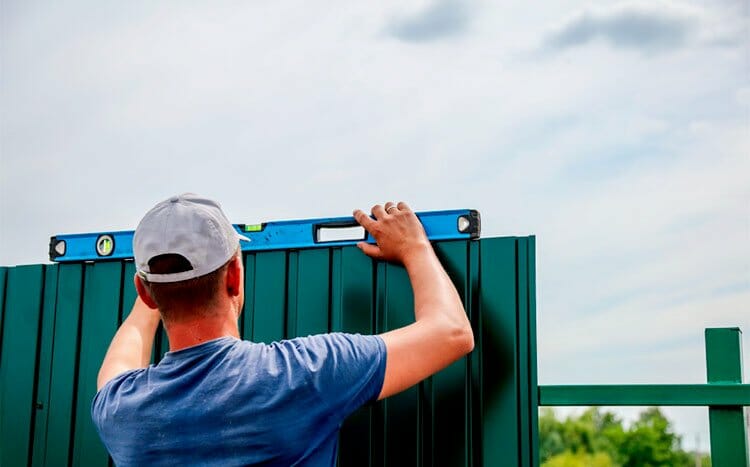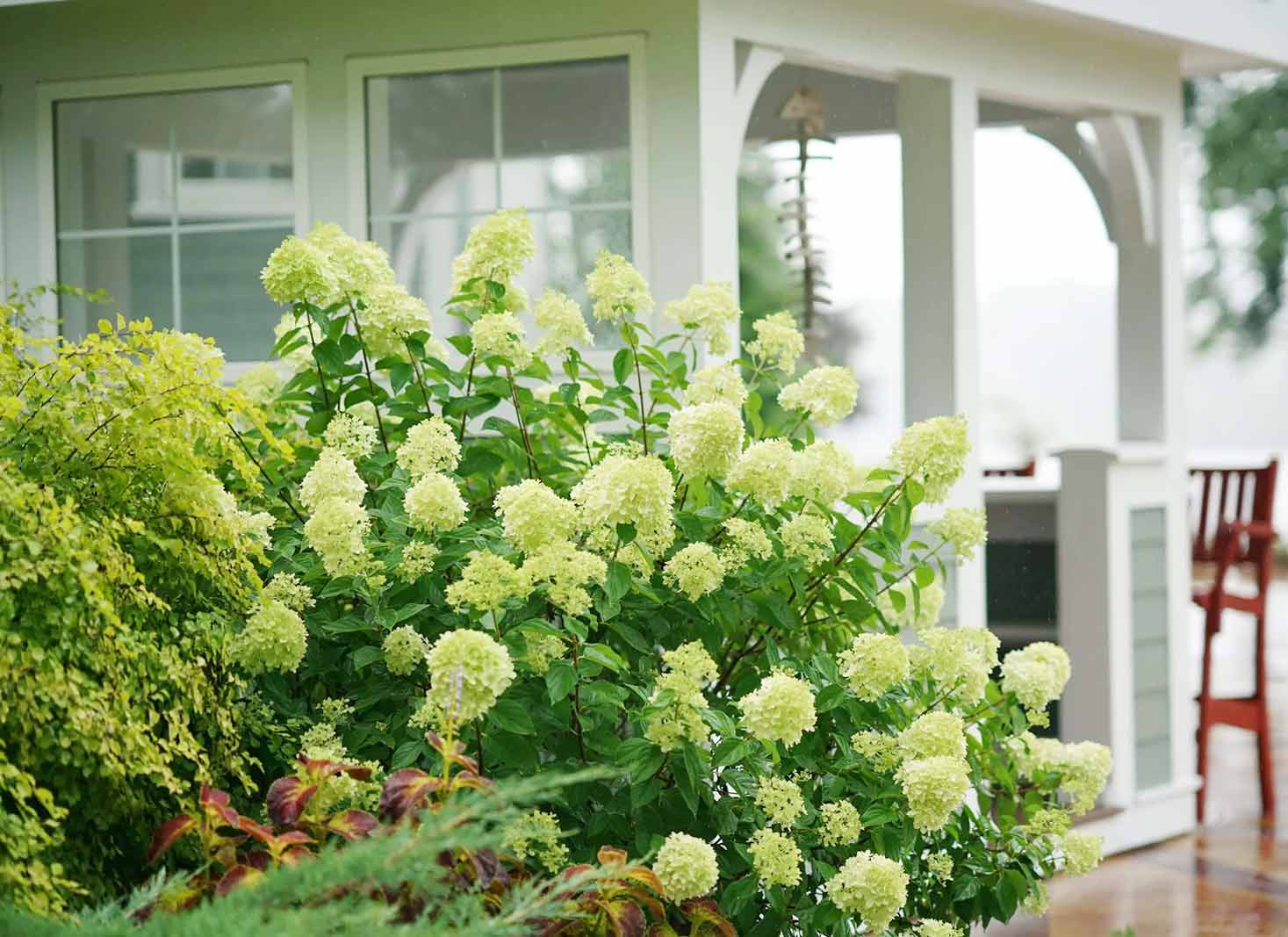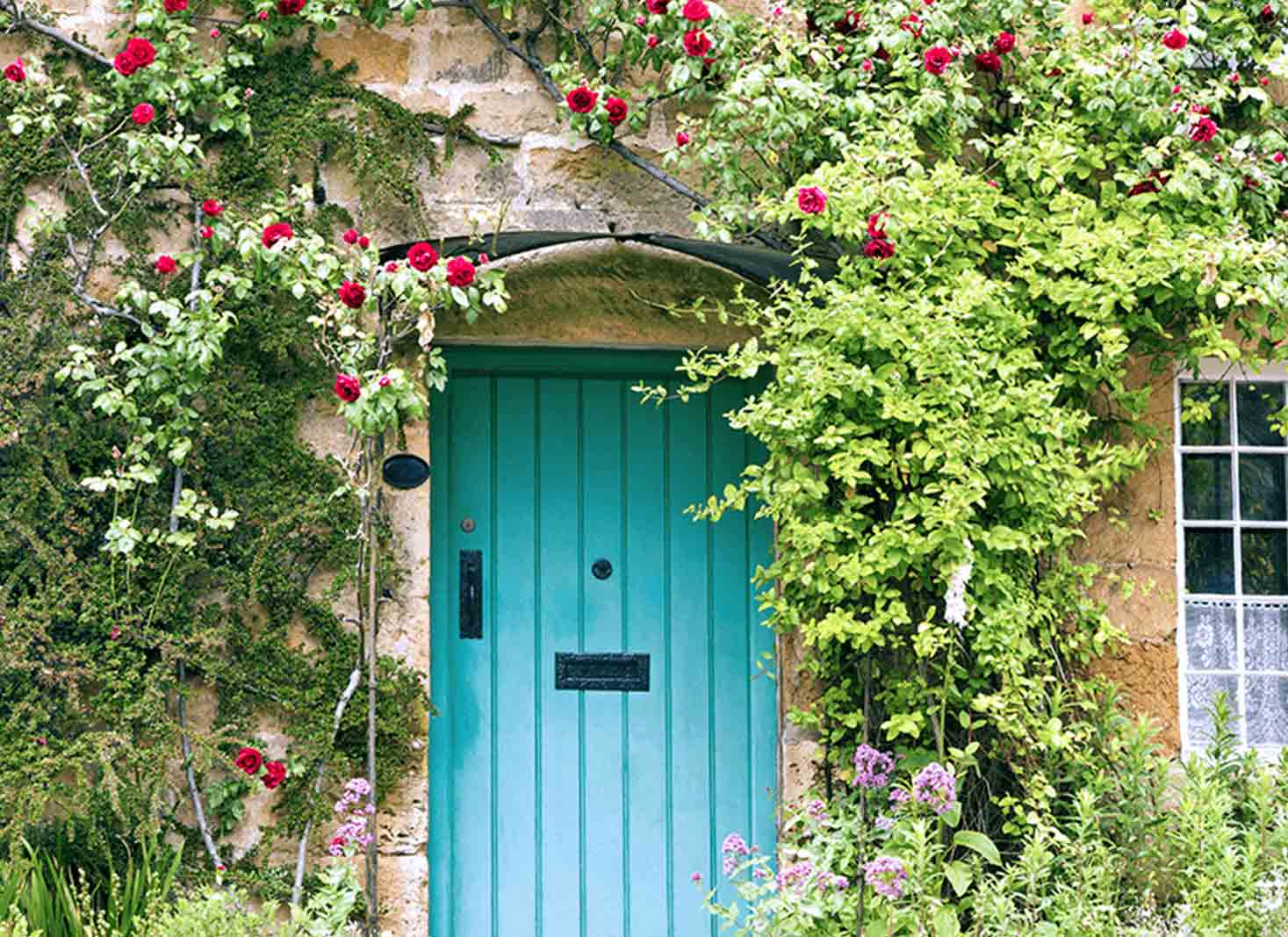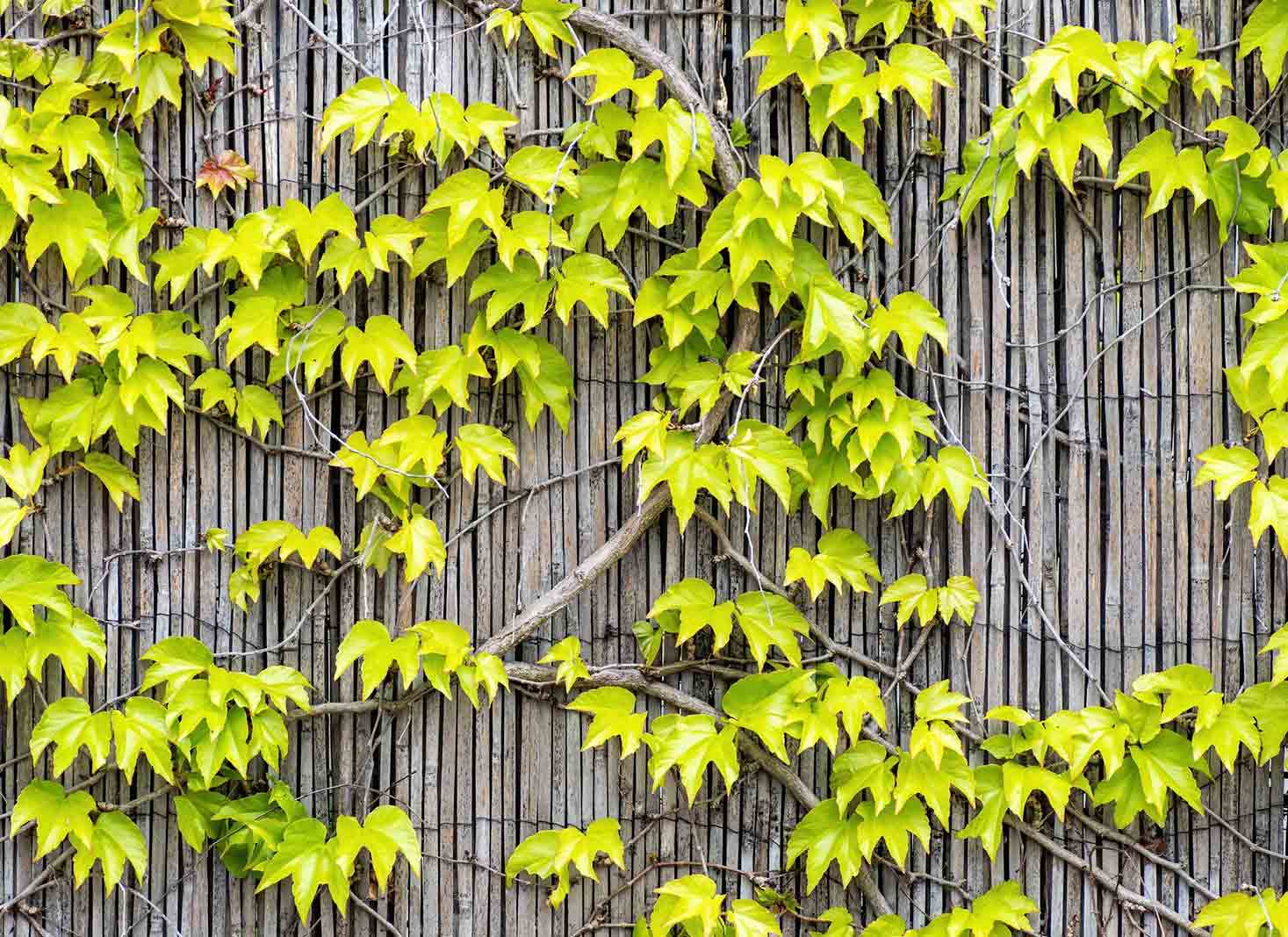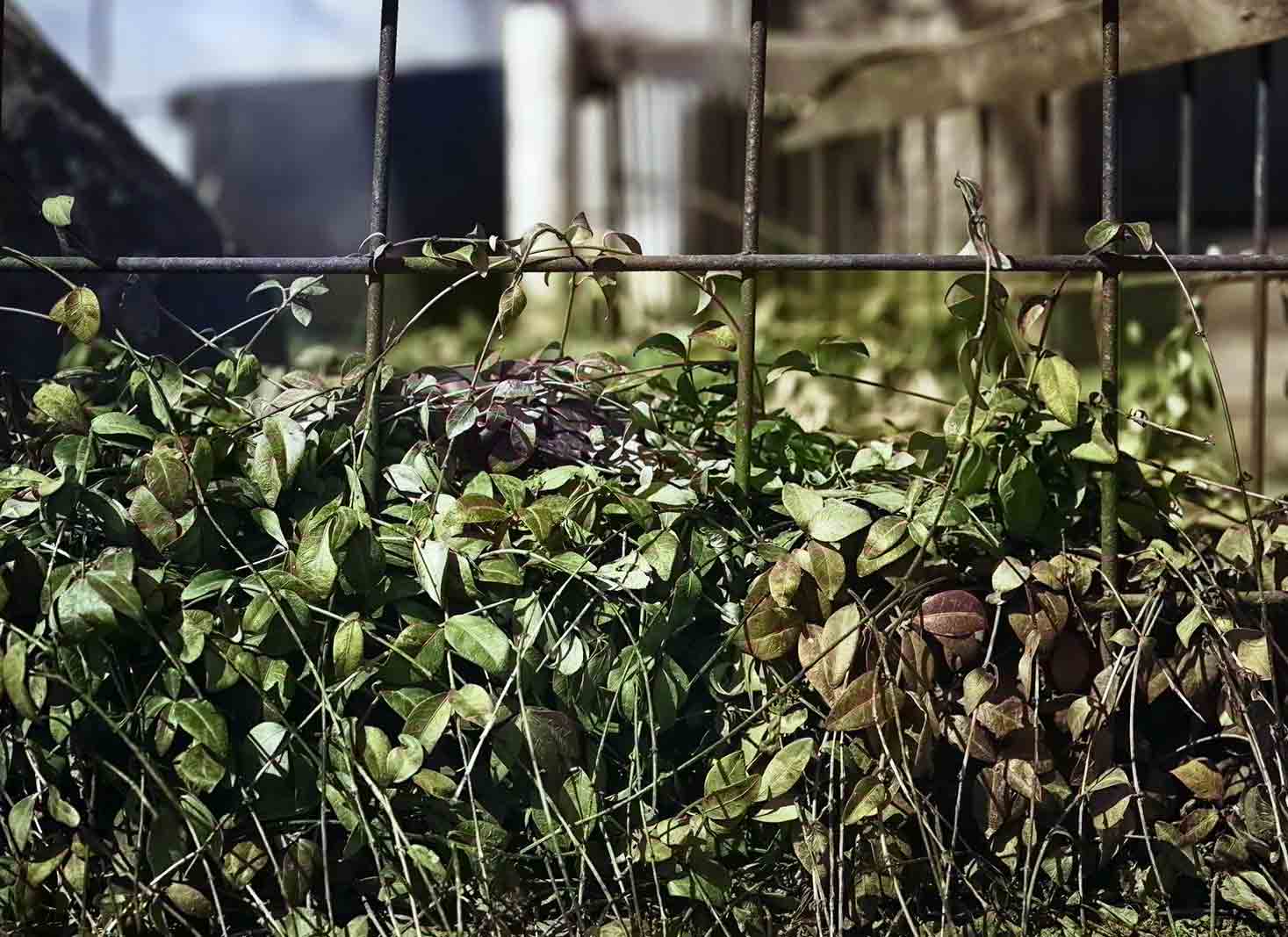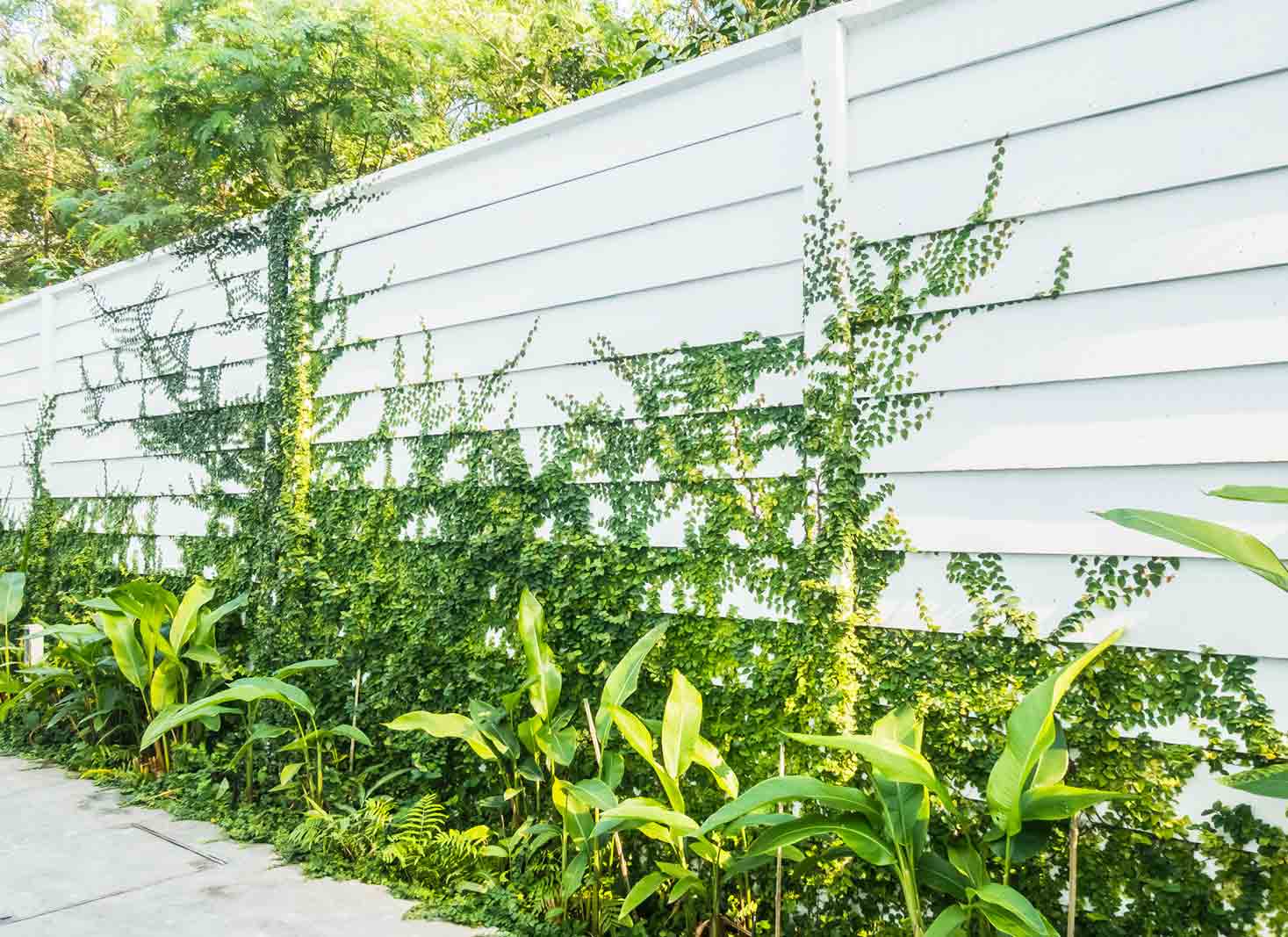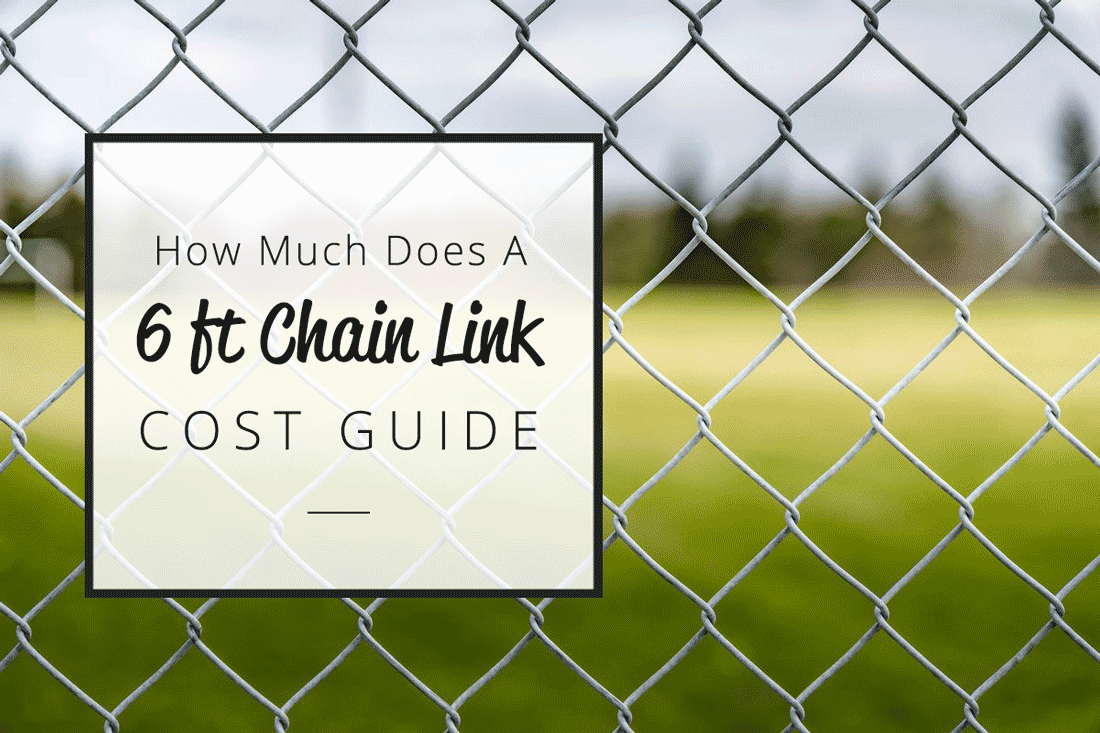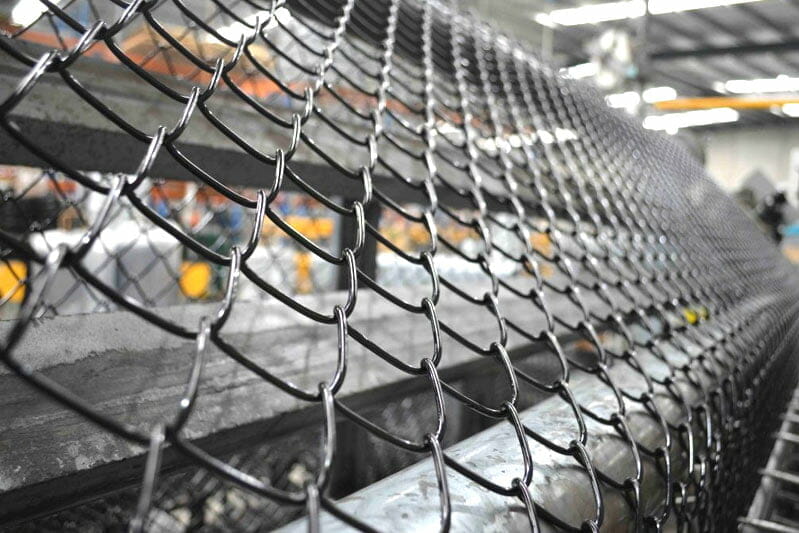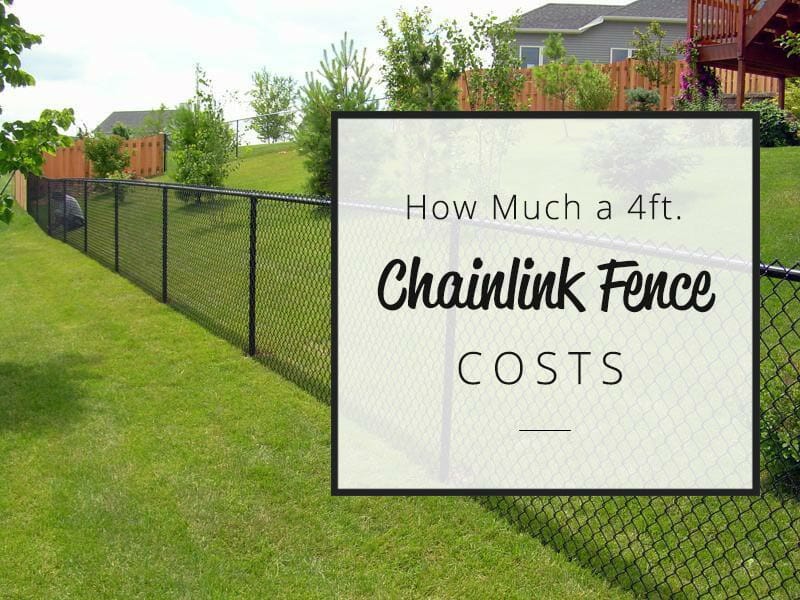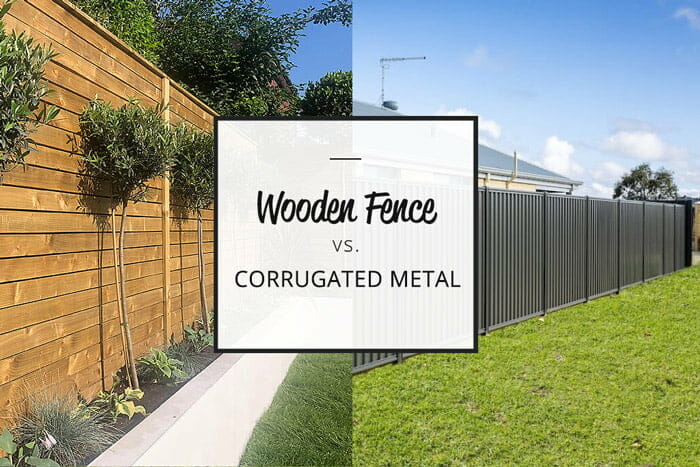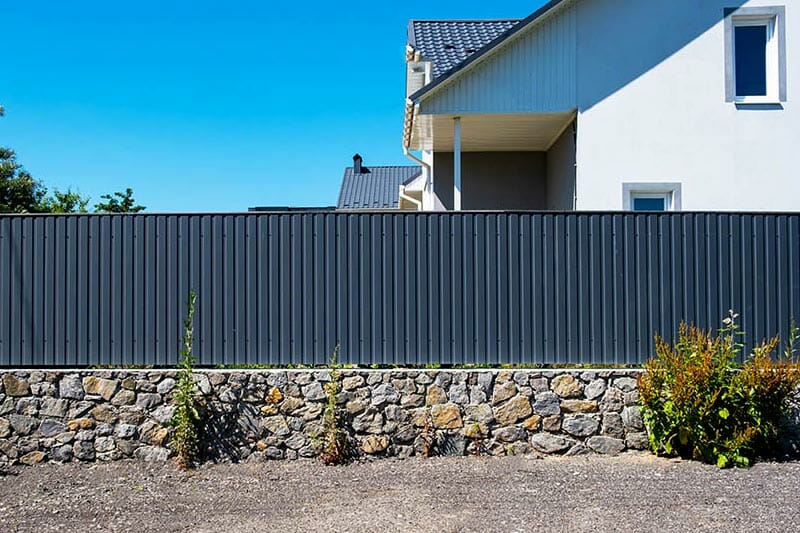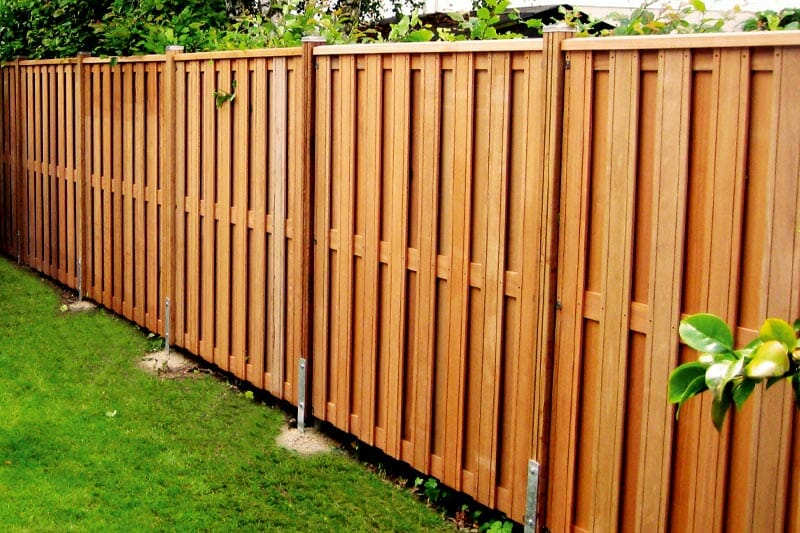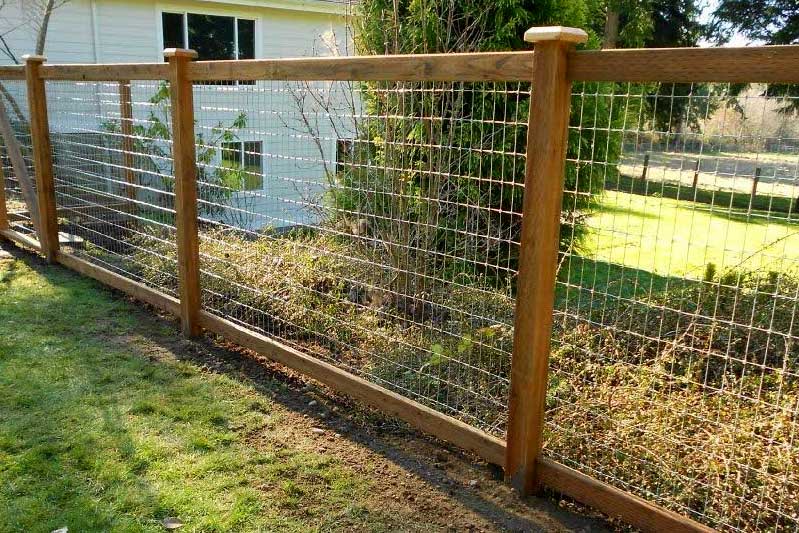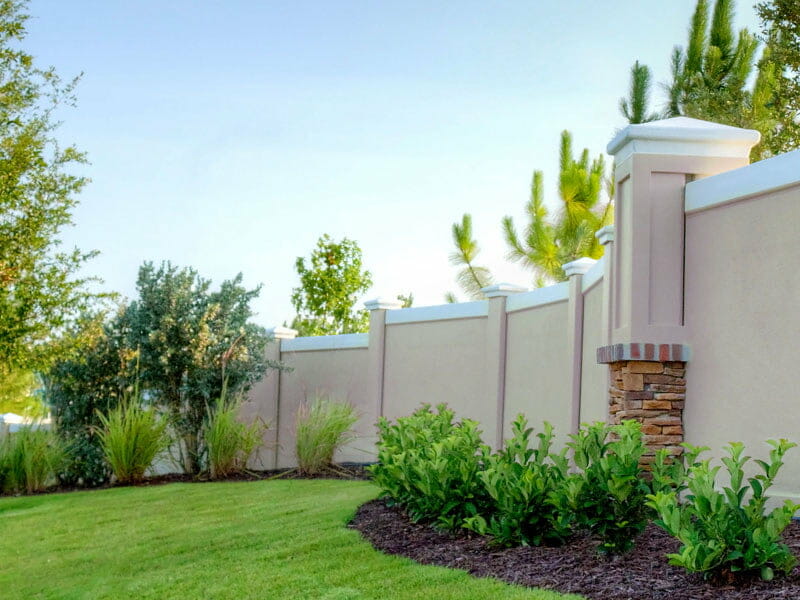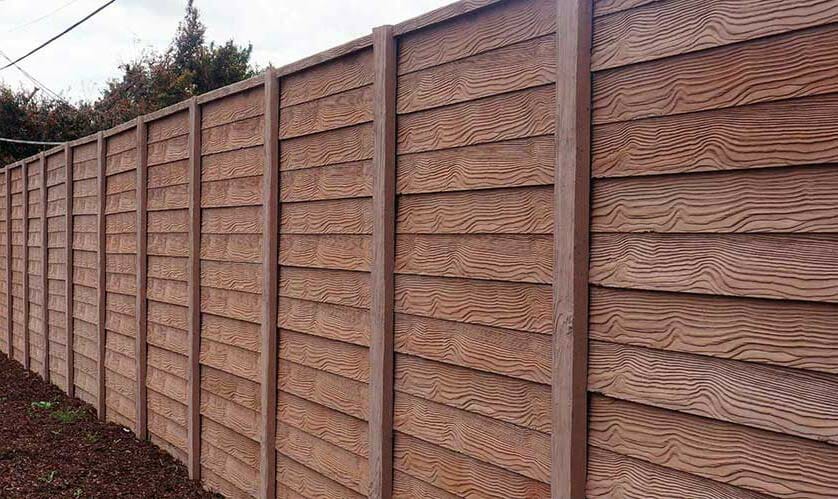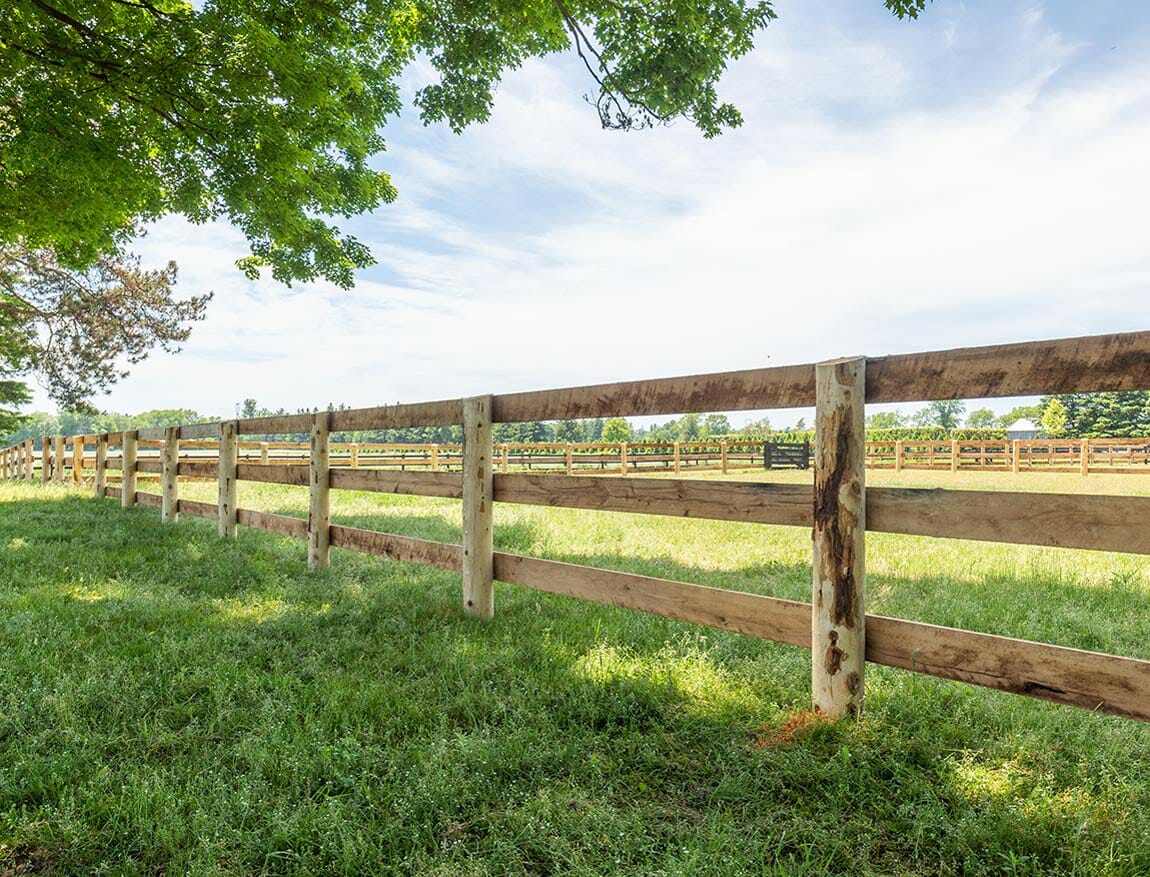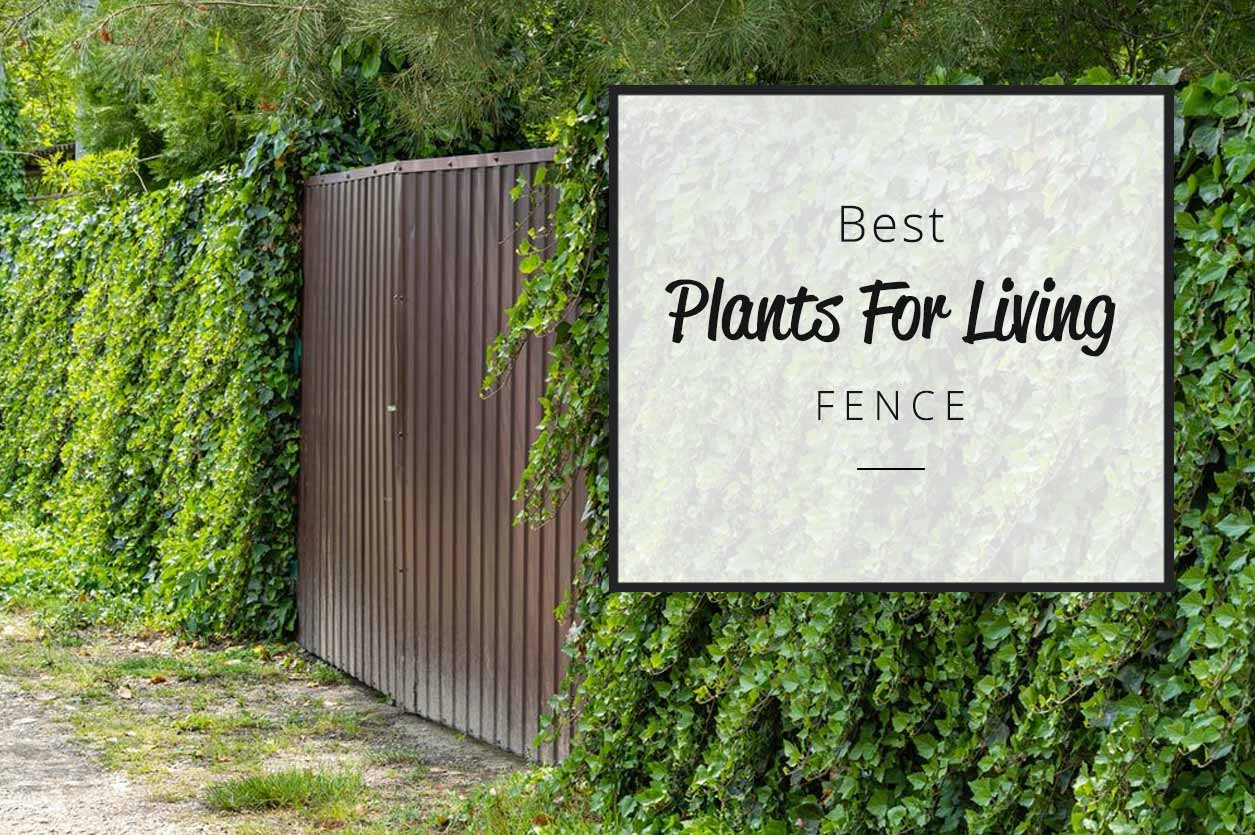
Have you ever walked by a fence made out of plants? Well, that is commonly referred to as a “living fence.” Living fences are usually made of tall plants planted close together, either alone or supported by building materials. They grow close together and create a dense growth that serves as a fence.
Some of the best plants for living fences include Lilacs, Weeping Willow, Euonymus, Laurel, Hicks Yew, Juniper, etc. These plants can be trees, shrubs, vines, bushes, etc. Living fences are an excellent way to add greenery to a house, especially if you don’t have a proper garden. Many of these plants are low-maintenance and provide homeowners with a beautiful and unique fence.
The characteristics and features of these plants are detailed below. Read on to learn more.
10 best plants for living fence
Many plants can be used for living fences. These plants can be used in combinations or alone. Some produce flowers, some are evergreen, some only grow in full sunlight and some can survive low temperatures.
The type of plant that best suits a home will depend on many factors. Here are some of the best plants that can be used to make living fences.
1. Lilacs

- Plant type; Shrub
- Average Size at maturity; 12 to 15 feet tall and 10 to 12 feet wide.
- Best growing conditions; Lilacs grow best in full sun and moist, well-drained soil. They are sensitive to pH change and prefer slightly alkaline soils.
- Level of maintenance; lilacs are very low-maintenance and may only require yearly pruning to shape the shrub.
Lilacs are one of the best plants for a living fence. They are relatively fast-growing especially when young and can reach up to a foot within a year. Mature lilacs can grow up to 12 to 15 feet tall and 10 to 12 feet wide. They make very beautiful and ornamental living fences and brighten up a home when they bloom and produce lilac-colored flowers that have very pleasant scents.
Depending on where you live, and the lilac variety present, lilacs can provide color and fragrance from April through June. lilacs grow best in full sunlight and in soils that are slightly alkaline, moist, and well-drained.
2. Bamboo

- Plant type; Grass
- Average Size at maturity; depends on the variety. Some can grow as short as 4ft while others are as tall as 100ft.
- Best growing conditions; bamboo grows best in indirect sunlight, tropical-like temperatures of 65–95°F (18–35°C). They also grow well in moist soil with good drainage.
- Level of maintenance; low maintenance. However, make sure to monitor their growth to prevent the invasion that some species exhibit.
Bamboos are one of the best plants for a living fence. They are fast-growing, durable, and low-maintenance. Although mistaken as trees, bamboos are grass albeit modified. Bamboo plants can grow up to 50 ft or as short as 4 ft depending on the variety.
They grow well in indirect sunlight in warm atmospheres. If you live in a cold area, consider an evergreen bamboo that will be able to withstand the low temperatures. Make sure to keep an eye on the bamboo plants to stop any invasion of the plant outside of the fence.
3. Weeping Willow
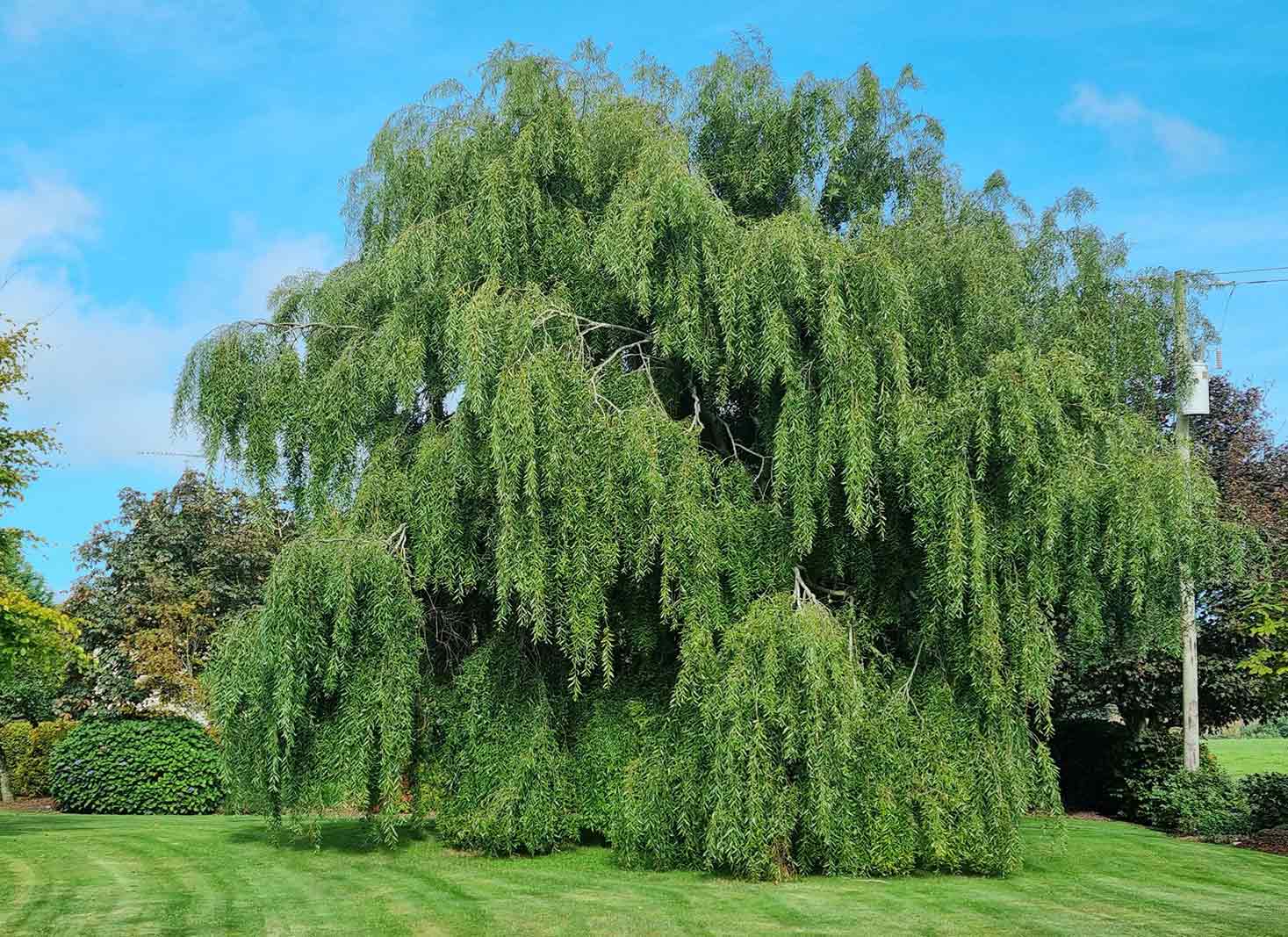
- Plant type; Tree
- Average Size at maturity; 35–50 ft. tall, 5–50 ft. wide
- Best growing conditions; weeping willow grows well in partial to full sunlight. It also grows well in acidic or alkaline, loamy, clay, or sandy soils as long as it is moist, rich, and well-drained. It grows well near water but has some drought tolerance.
- Level of maintenance; high maintenance. They are prone to diseases and insect infestations.
The weeping willow is one of the best plants for a living fence. The tree has large spreading branches and can be planted so two intertwines cause passage while providing a fence. They grow quickly and can reach up to 35–50 ft. tall, and 5–50 ft. wide.
The tree however has a short life span of 30 to 50 years depending on the level of care it received during its lifetime. They grow well in full to partial sunlight and in both acidic and alkaline loam, clay, or sandy soil that is moist, rich, and well-drained.
4. Yew Plant
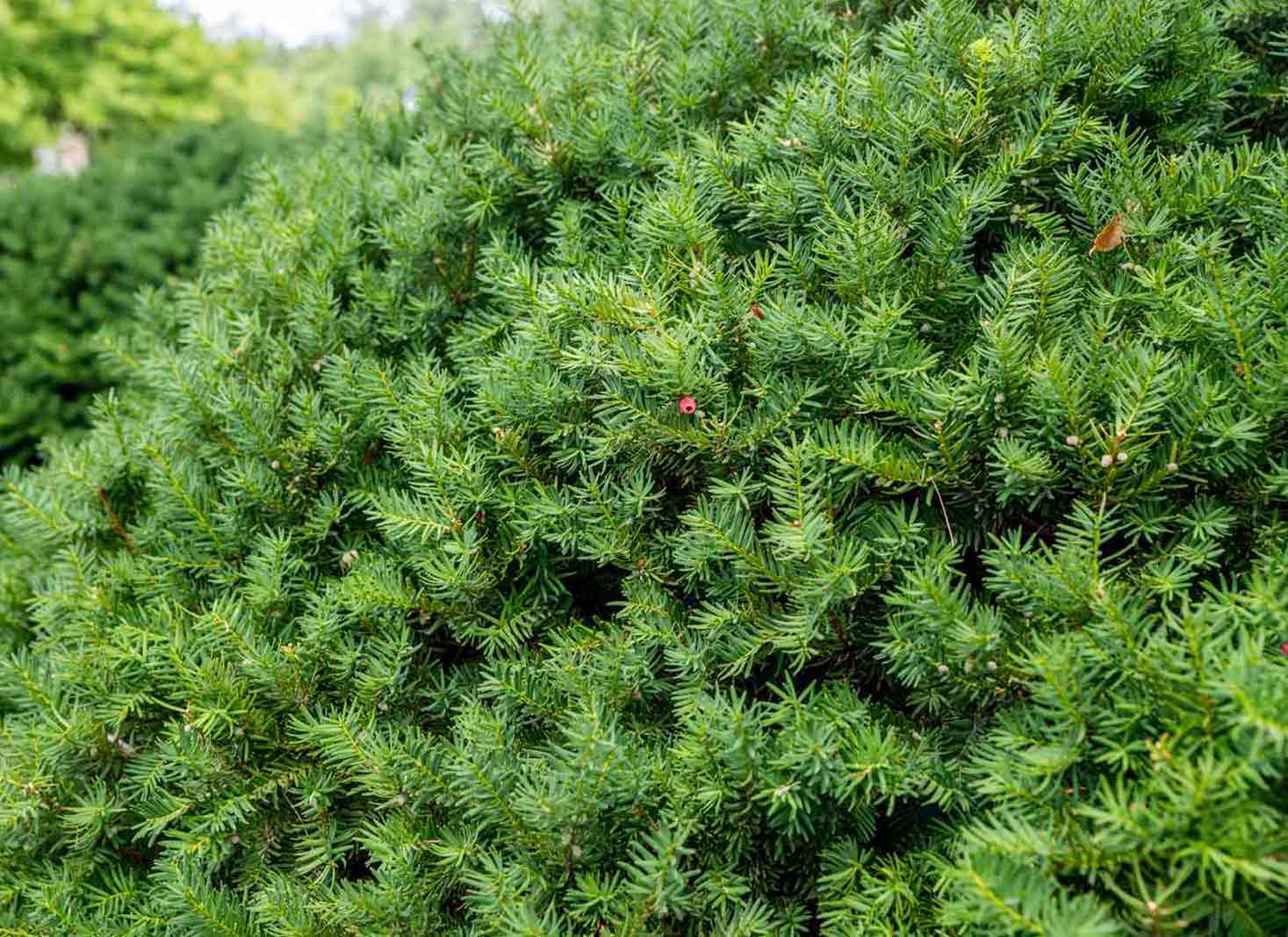
- Plant type; Shrubs
- Average Size at maturity; 8 ft to 12 ft tall with a width of 4 to 20 ft.
- Best growing conditions; Yews grow best in humus-rich soil that has excellent drainage. Fertilize yews in spring with a layer of compost and an evergreen shrub fertilizer. Make sure to keep young yews watered for maximum growth
- Level of maintenance; high maintenance. Parts of the yew shrub are harmful when consumed so keep kids and pets away.
Yew is one of the best plants for living fences. They are relatively fast-growing and they grow thick and dense. The plant is an evergreen and this accounts for the yew plant’s ability to do well in cold regions. The female yew trees have highly poisonous berries that need to be kept out of reach of children and pets.
Young growing yew plants should be bought and watered regularly to facilitate growth. Yew plants grow the best humus-rich soil that has excellent drainage. Fertilize yews in spring with a layer of compost and an evergreen shrub fertilizer.
5. Holly

- Plant type; trees and shrubs
- Average Size at maturity; 30-50 feet
- Best growing conditions; holly grows well in full sun or under light shade. They need moist, well-drained soil, enriched with organic matter. They will grow in most soil types except solid chalk.
- Level of maintenance; medium maintenance for young plants and low maintenance for mature and established plants.
Holly is one of the best plants for living fences. They can be planted as trees or shrubs and are a very traditional choice for living fences. The Holly plant produces uniquely shaped leaves with sharp edges and bright red berries which add a pop of color to the greenery.
The Holly plant is also used for medicinal purposes although the berries are not edible and may cause harm to humans and pets. The holly plant may largely be associated with Christmas and its festivities, however, they are a great choice for a living fence. You can decide to go with holly shrubs or trees depending on your needs.
6. Privet
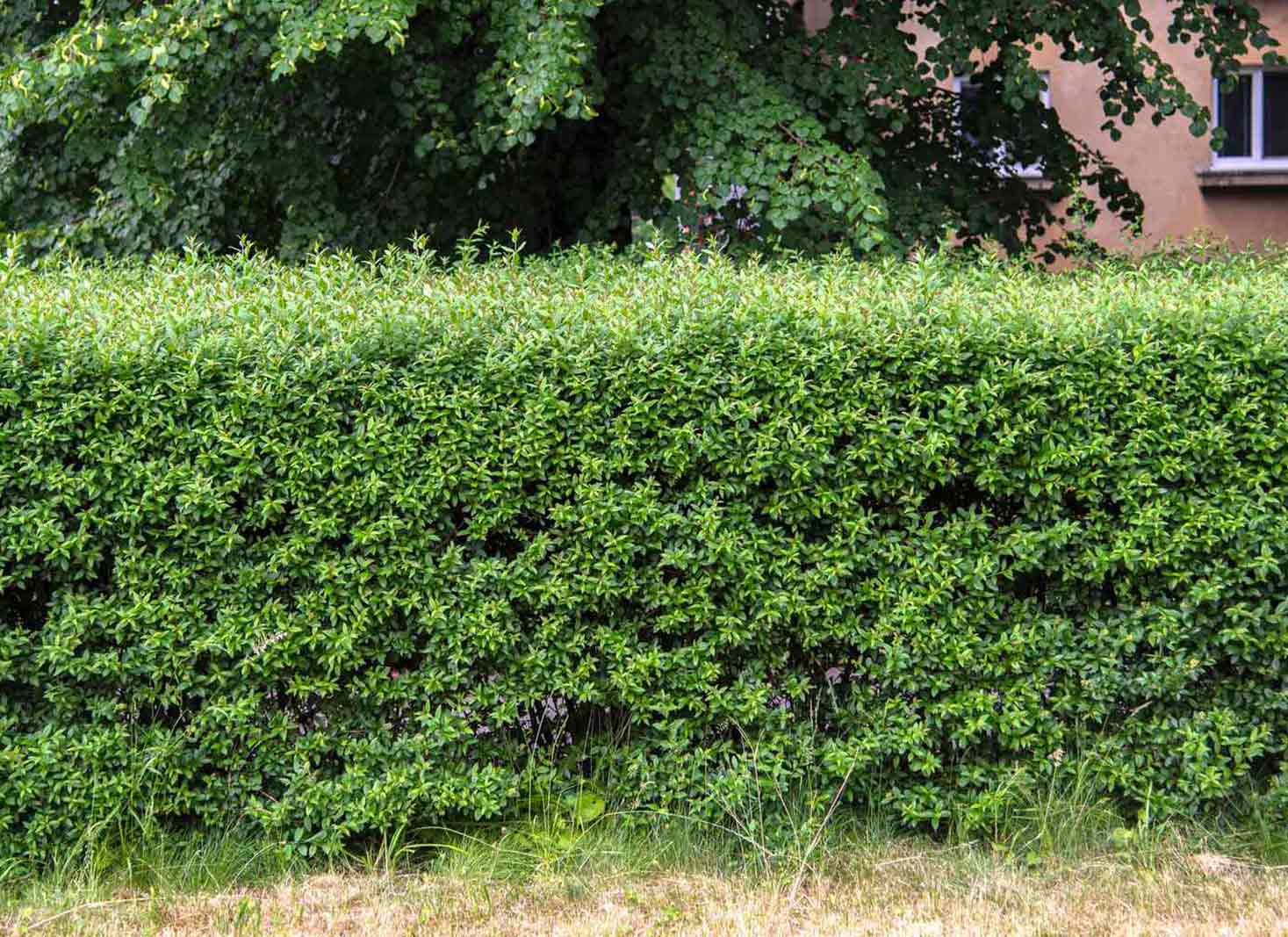
- Plant type; shrubs, trees
- Average Size at maturity; for shrubs; 8 to 20 feet tall. For trees; 35 to 40 feet in height and 5 to 10 feet wide.
- Best growing conditions; private plants grow in all well-drained soils. For best foliage density and flowering, sunlight exposure for 4 to 5 hours is recommended.
- Level of maintenance; low-maintenance once established.
Privet is one of the best plants for living fences. They are fast-growing plants that can create a dense, long-lasting hedge with a mature height and spread. Private plants come in the form of shrubs and trees. The shrubs can grow 8 to 20 feet when mature while the trees are twice as tall at 35 to 40 feet on maturity.
The private plant is very easy to handle and requires little to no knowledge of gardening. They can handle most growing conditions and are low-maintenance once established making them a good choice for many homes.
7. Arborvitae (Thuja)

- Plant type; Tree
- Average Size at maturity; 50-60 feet tall and 12-20 feet wide.
- Best growing conditions; Arborvitaes do best in well-drained soil that is moist, rich, and deep. It also grows well in the soil with a pH of 6.0 to 8.0, full sunlight exposure or partial shade, and high humidity.
- Level of maintenance; moderate maintenance
Arborvitae (Thuja) is one of the best plants for living fences. They are tall and narrow evergreen trees that can be used for different designs in landscaping e.g in making living fences. Arborvitae plants require a fair bit of maintenance especially when young. Young plants require daily watering to keep the soil moist and the plant hydrated.
Arborvitae (Thuja) plants can grow to 50-60 feet although there are shorter and more manageable species available. They do well in moist but well-drained soil that is slightly acidic and alkaline. Full exposure to sunlight is preferred although they will still grow under partial shade.
8. Euonymus
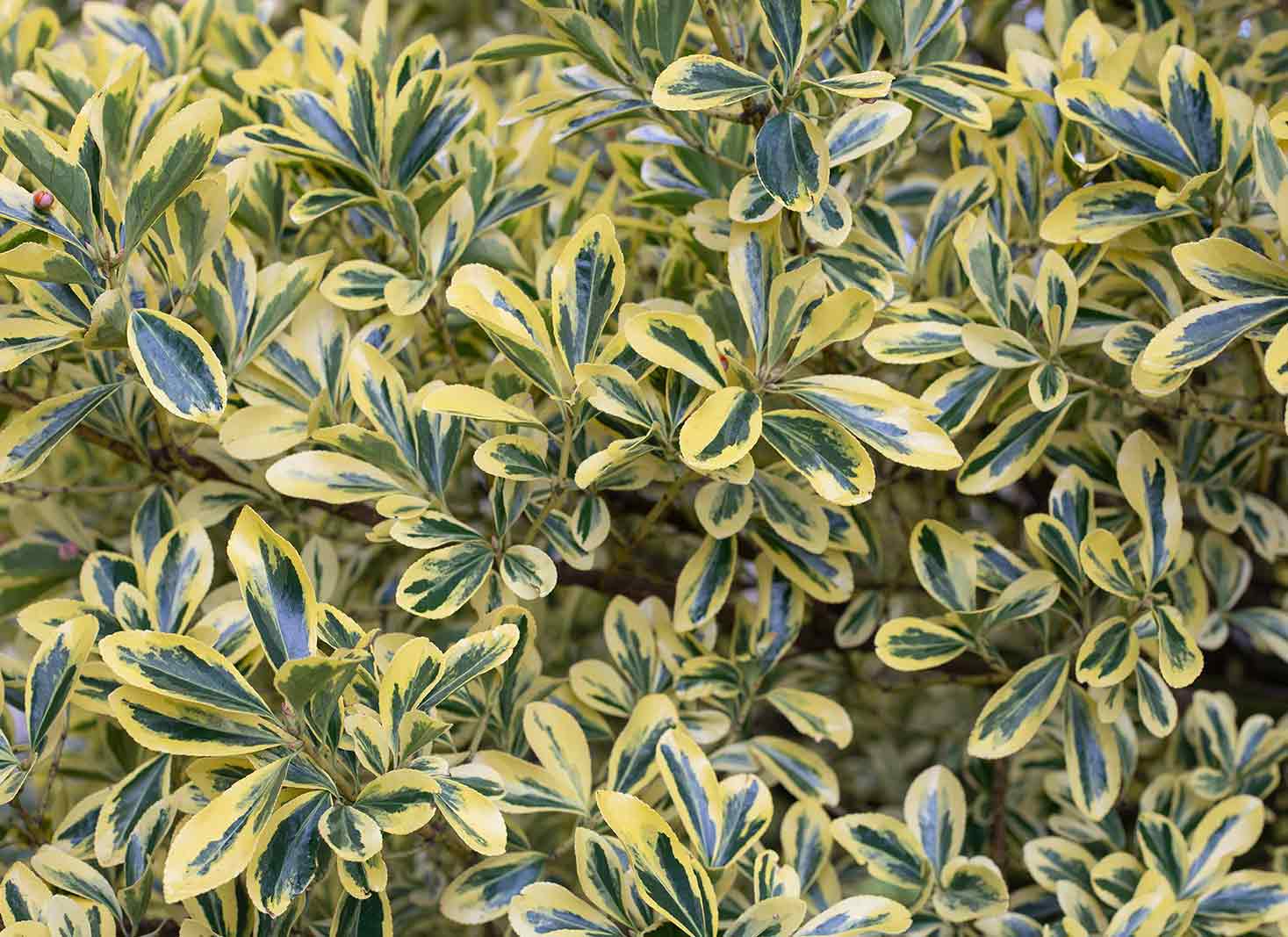
- Plant type; dwarf shrubs, vines, and tall trees
- Average Size at maturity; 10 to 15 feet high and 5 to 7 feet in width
- Best growing conditions; Euonymus grows well in well-drained soil, full sun exposure, and partial shade, although the variegated varieties do better with more sun.
- Level of maintenance; low maintenance
Euonymus is one of the best plants for living fences. They are well-known for their gold and green foliage and adaptability. The tough evergreens grow well in well-drained soil, full sun exposure, and partial shade, although the variegated varieties do better with more sun. They will tolerate less-than-ideal soils, exposed areas, windy corners, and a fair shade.
For more ideas besides trees for a living fence, see our article here.
9. English/cherry Laurel
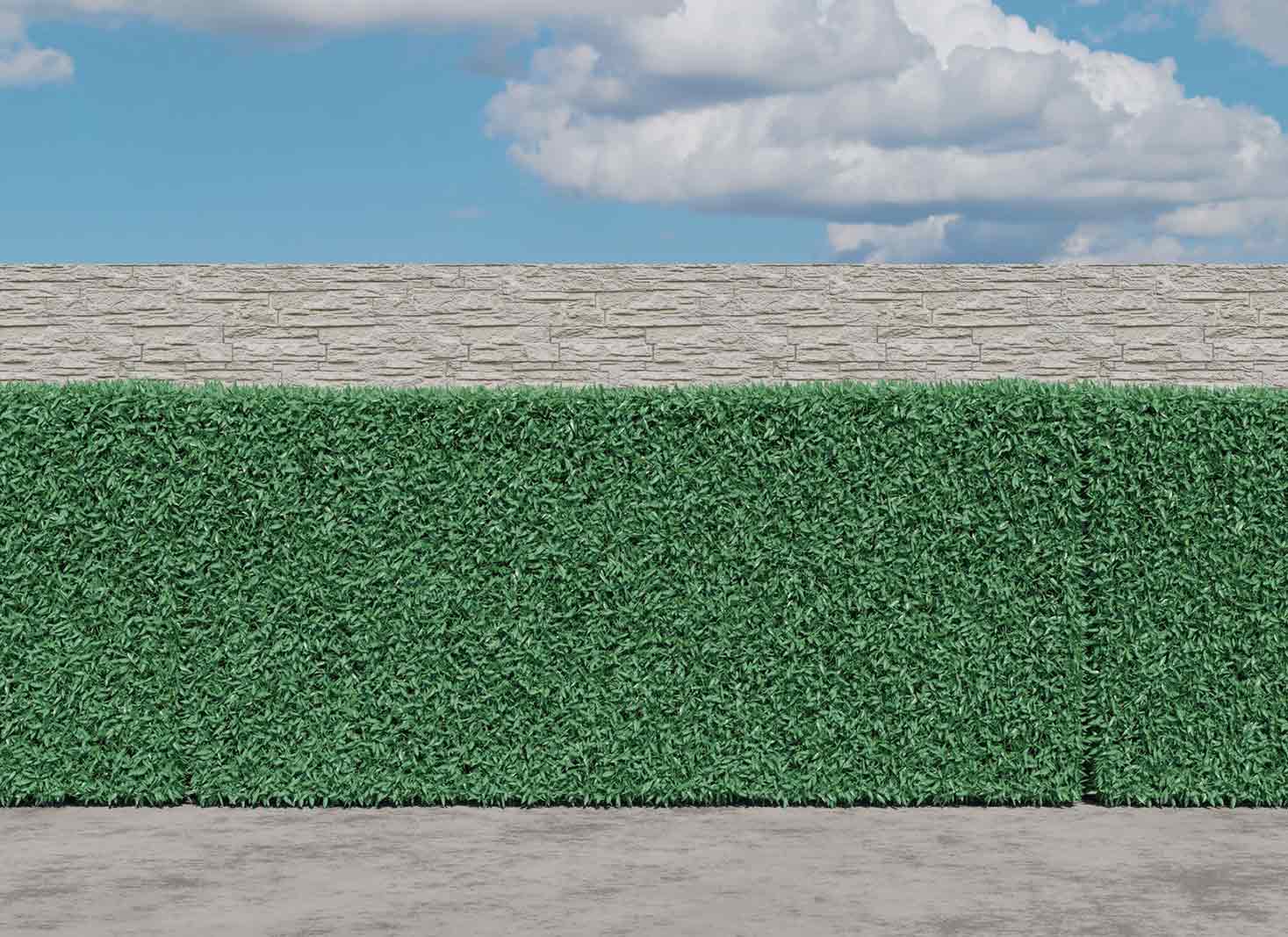
- Plant type; small tree, large shrubs
- Average Size at maturity; 20 feet tall and 6 to 10 feet wide.
- Best growing conditions; English/cherry laurels grow well in moist soil with good drainage and are rich in organic matter. It tolerates all light conditions from full sun to partial and even full shade, preferring more sun in cool climates and more shade in warmer areas.
- Level of maintenance; low-maintenance.
The English laurel is one of the best plants for living fences. It is also known as the cherry laurel, a large evergreen shrub or small tree. The plant is a fast-growing, dense evergreen plant that makes a good privacy fence. This is especially handy if you want to cover up an ugly fence quickly.
English or cherry laurels grow about 1 to 2 feet year,ly so you will be sure to have a proper privacy fence in no time. They grow well under all sorts of light conditions but require moist, well-drained soil rich in organic matter to grow properly.
10. Juniper

- Plant type; coniferous trees and shrubs
- Average Size at maturity; 4 inches to 50 feet tall and 6 to 20 feet wide depending on the species.
- Best growing conditions; junipers grow well in full sun or light shade.
- Level of maintenance; little to no maintenance.
Juniper is one of the best plants for living fences. They are coniferous trees and shrubs. They are very unique plants to have in your garden and will require little to no maintenance. Junipers have the capacity to self-prune, shedding branches for survival, and their sap is rot-resistant.
Junipers provide beauty, privacy, and a nice fragrance all in one. Junipers grow well in full sun or light shade with well-drained soils. Although some species can be grown in full shade, most junipers will become more open and leggier if they don’t get enough sun.
Have you ever seen a living fence? Maybe you want one but you’re confused about which plants to get. Well, there are many plant options for fence lines. You can choose creeping, climbers, dwarf trees, and shrubs. Shrubs are small to medium woody perennial plants. Shrubs can be used to create a privacy fence and add green foliage and color to your home.
Some of the best shrubs for fence lines include the Dwarf Hinoki Cypress Shrub, August Beauty Gardenia Shrub and so many more. Shrubs are usually recognized for their multiple stems and height as they do not grow as large as trees (6 to 10 meters). Shrubs can be evergreen or deciduous and make a good plant option for fence lines.
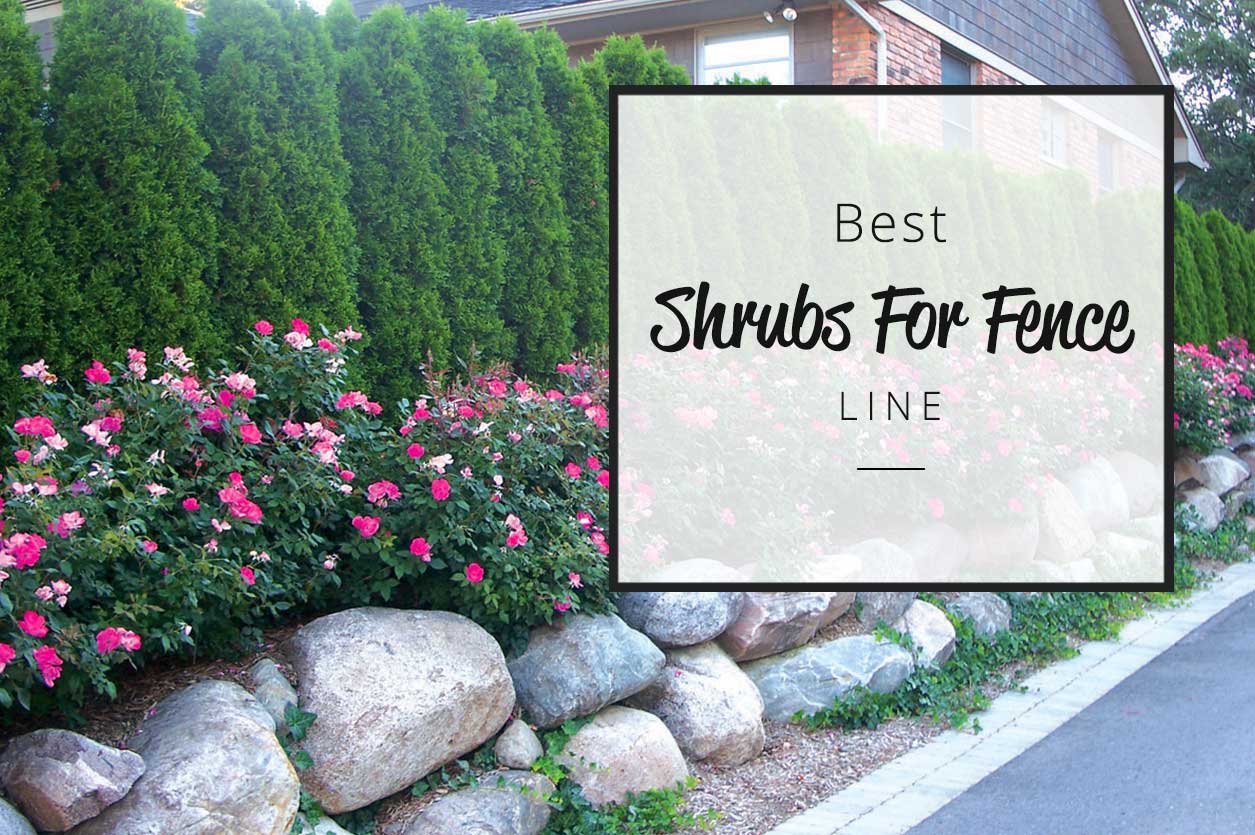
The best shrubs for fence line
The following shrubs are some of the best shrubs for a fence line. They come in different sizes, heights, and shapes. Some have bright flowers, dense foliage, and even berries. There are different varieties of shrubs for different growing zones, levels of care, types of aesthetics, etc.
1. Dwarf Hinoki Cypress Shrub
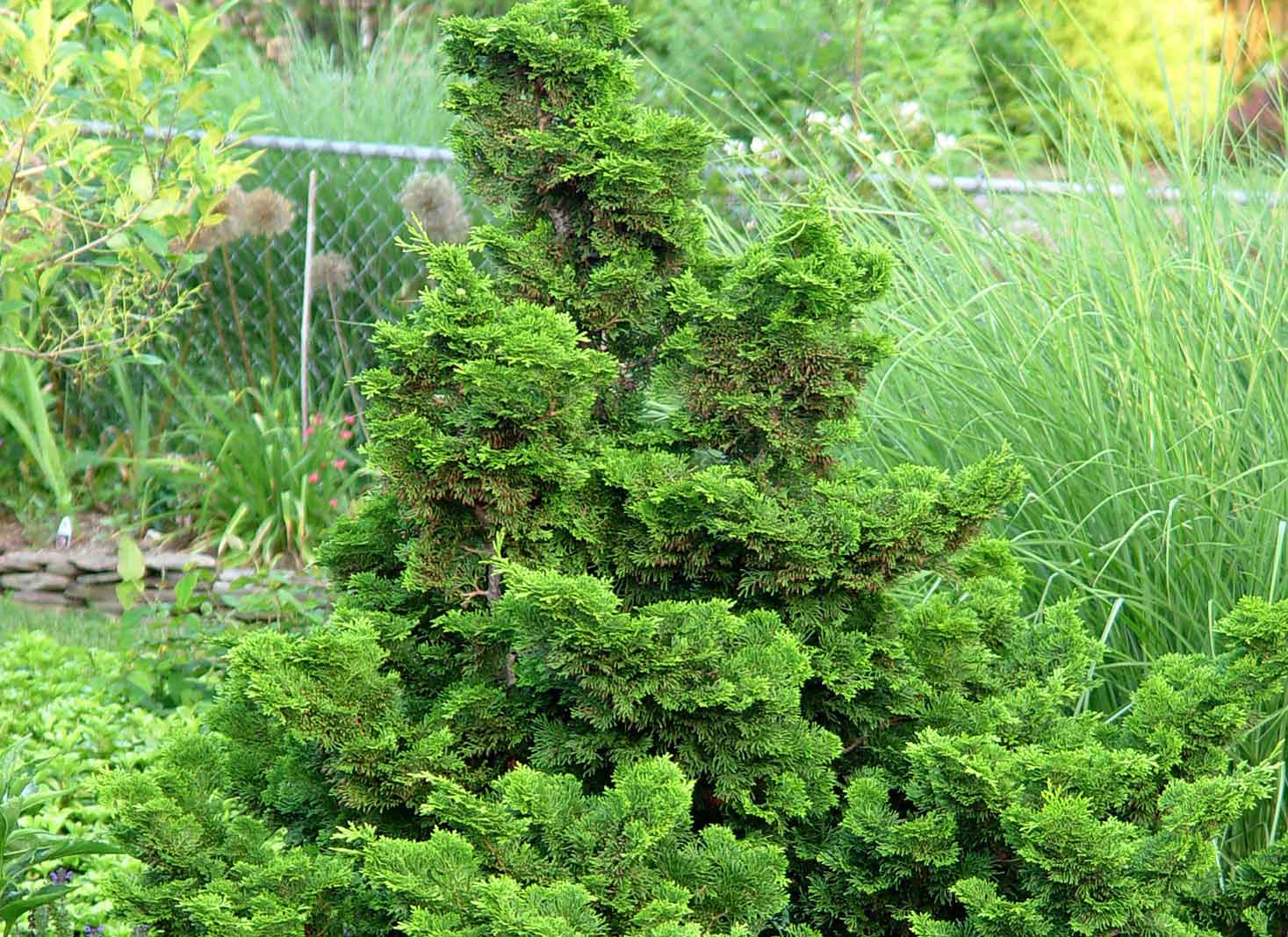
- Scientific name; Chamaecyparis obtusa ‘Nana Gracilis’
- Description; These shrub leaves grow in soft sprays on upright branches. The mature leaves are darker with a braided look and blend well with young light-green leaves.
- Maturity size; 4ft – 6ft tall.
- Level of care; very low-maintenance
- Hardiness Zone; zones 4 – 8
- Best conditions; it requires full sunlight exposure but can survive in minimal shade. Grows well on well-drained soil that is slightly acidic at a pH of 5.0 – 6.0.
The Dwarf Hinoki Cypress Shrub is one of the best shrubs for fence lines. The shrub can grow to 4 to 6 ft in height making it a good choice for a fence. It is tall enough to provide privacy to the homeowners and prevent onlookers from seeing into the yard. The tree is easy to maintain and grows well in full sunlight or minimal shade.
The soil should be slightly acidic and well-drained to provide optimum growing environments for the shrub. Make sure to water the shrub more frequently in dry seasons. Apply fertilizer in the second year to boost growth. Pruning of the shrub is not necessary unless you are looking to shape the tree into the desired form.
2. August Beauty Gardenia Shrub
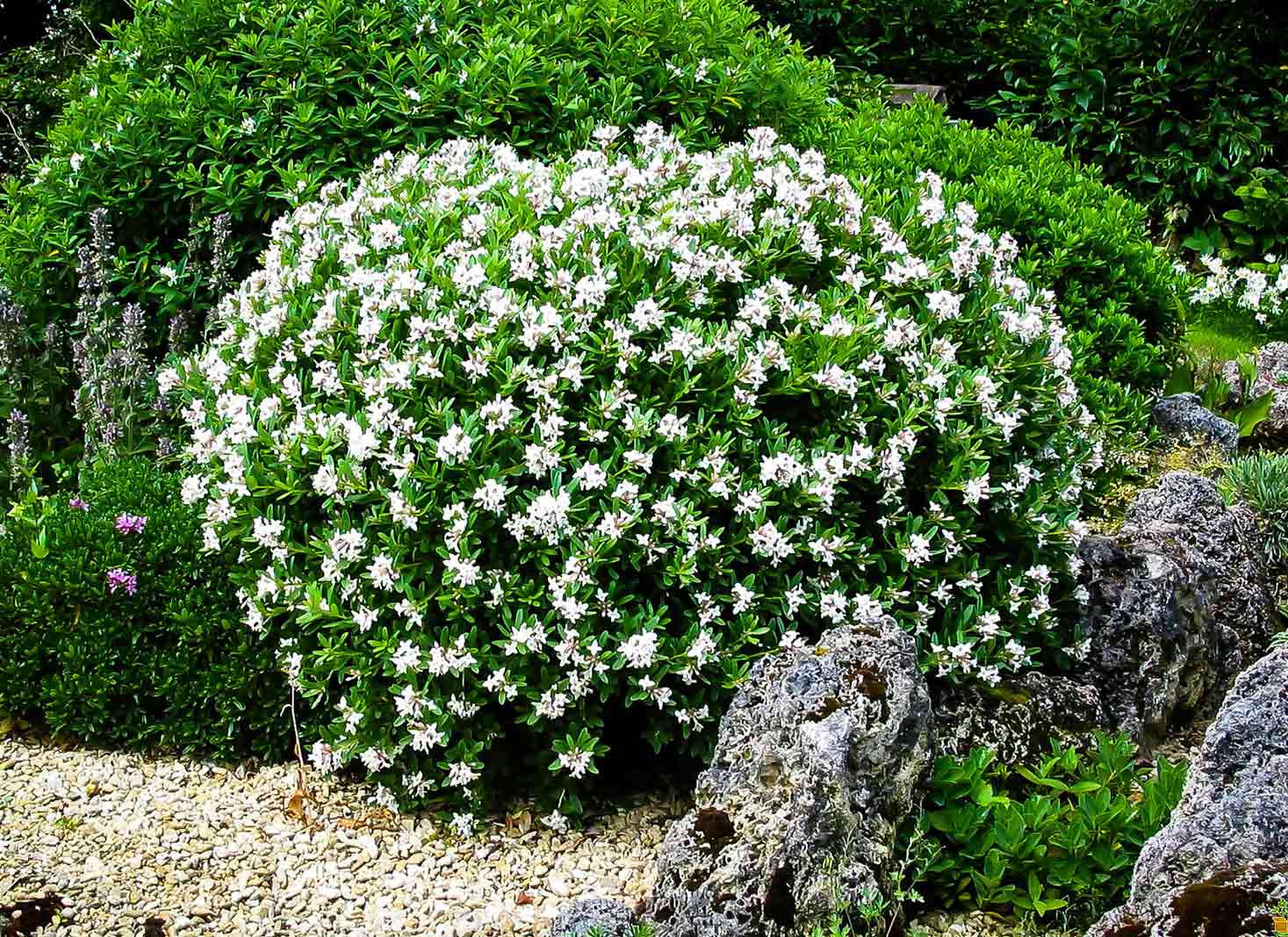
- Scientific name – Gardenia jasminoides
- Description – the shrub has dense, dark green tear-dropped shaped leaves that contrast well with the sharp white of its flowers
- Maturity size – 5ft tall and 3ft wide
- Level of care – water regularly, apply high-nitrogen fertilizer btw April-November and make sure to prune when blooming to improve air circulation and prevent overcrowding.
- Hardiness Zone – zone 8-11
- Best conditions – grows vigorously in full sunlight or minimal shade and slightly acidic soil with a pH of 5.0-6.0.
The August Beauty Gardenia Shrub is one of the best shrubs for fence lines. The shrub grows to about 5ft tall and 3ft wide. This plant has enough length and foliate to provide privacy, making it a good choice for a fence. The shrub blooms in the spring and has very beautifully highly scented double-petaled white flowers.
In good condition, the shrub will reach its maturity in about 3 – 4 years of planting and will be able to serve as a privacy fence all on its own. The August beauty gardenia shrub does require care and maintenance such as weekly waterings, fertilizer application mid-year, and regular pruning to remove dead flower heads and branches, etc.
3. Mohave Pyracantha (Firethorn) Shrub

- Scientific name – Pyracantha x ‘Mohave’
- Description – this shrub is an evergreen plant that grows upright. It has thorny stems and glossy green leaves. The shrub blooms in spring and has beautiful white flowers which later morph into red berries in the fall.
- Maturity size – 8 to 12 ft tall.
- Level of care – minimal watering weekly, apply slow release NPK in winter to aid flower and berry production in spring and fall, prune moderately to cut off dead branches and to shape the shrub into the desired form.
- Hardiness Zone – zones 6 – 9
- Best conditions – grows well in full sunlight, soil with good drainage, and slightly acidic or alkaline with a pH of 5.0 – 8.0.
The Mohave Pyracantha Shrub also known as the firethorn is a very good shrub for fence lines. The evergreen shrub can grow upright to about 8 to 12 ft. The upright nature of the firethorn shrub makes it a very good shrub for fences. The bright flowers and berries can also serve to add color to your property.
The firethorn shrub blooms in the spring and produces white flowers. These flowers morph into bright red-orange berries. These berries can cause a mild stomach ache when eaten in large portions by humans. However, they can be poisonous to cats and dogs. The firethorn shrub grows well in full sunlight, and well-drained soil with a slight acidity or alkalinity.
4. Korean Boxwood Shrub
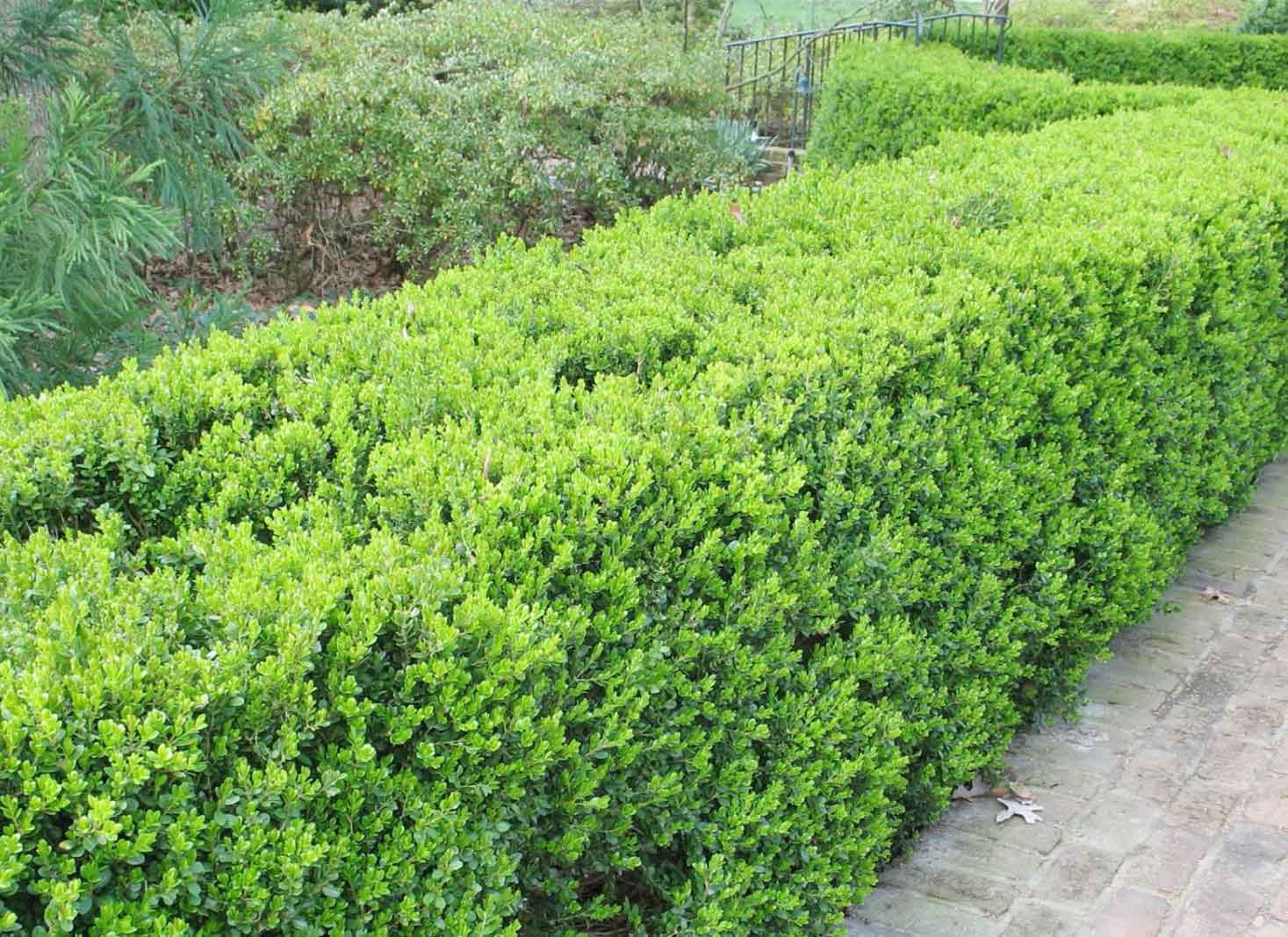
- Scientific name – Buxus sinica var. insularis ‘Wintergreen’
- Description – this shrub is evergreen with a dense arrangement of leaves in varying shades of green. It is well known for its ability to remain green through the coldest winters.
- Maturity size – 2 – 4ft tall.
- Level of care – very low maintenance. Require watering once biweekly, apply shrub fertilizer in spring if there are any signs of slow growth. Prune only dead branches or shape them into the desired form.
- Hardiness Zone – zones 4-9
- Best conditions – full sunlight, well-drained loamy soil that is mostly neutral with an ideal pH of 6.5 – 7.5.
Korean boxwood shrubs are one of the best shrubs for fence lines. The evergreen nature of the shrub combined with the dense foliage makes it a good border shrub. The Korean boxwood grows to about 4ft when mature. This makes it a poor choice if you’re looking for privacy. However, the short nature makes it a good choice for hedges or to mark out certain parts of a property neatly.
5. Skip Laurel Shrub
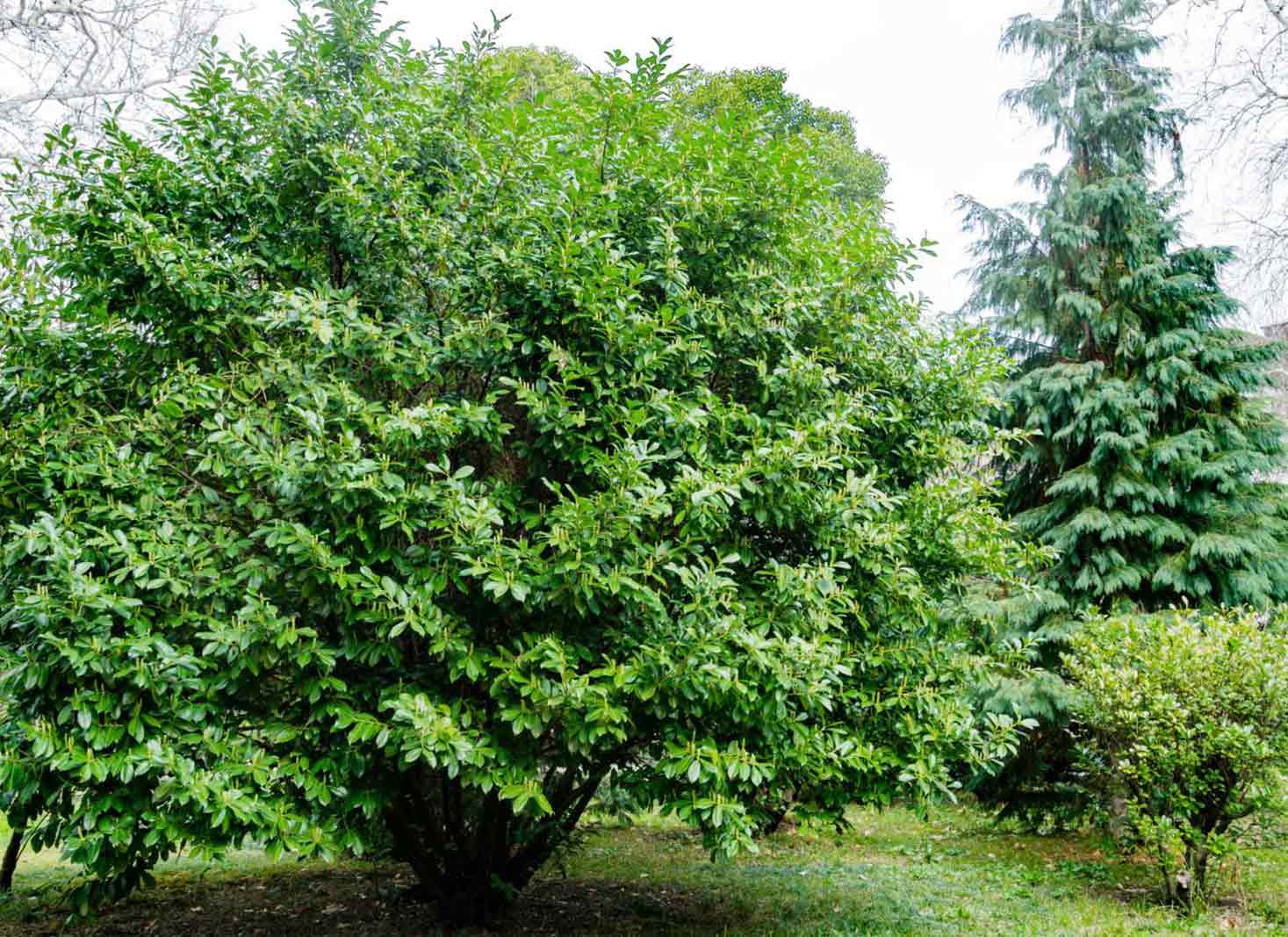
- Scientific name – Prunus laurocerasus
- Description; this shrub is a dense evergreen plant with dark green leaves. It doesn’t attract animals like deer and grows very tall when mature.
- Maturity size – 12 – 16 ft tall.
- Level of care – low maintenance. Water weekly and prune when necessary. You can also prune it into any specified shape.
- Hardiness Zone – zones 5 – 10.
- Best conditions – it can grow well in full, partial, or low sunlight, and almost all soils whether acidic or alkaline. It is a versatile and resilient plant.
The skip laurel shrub is one of the best shrubs for fence lines. The shrub has very dense foliage, and dark green leaves and is unattractive as food for herbivores. The skip laurel shrub is a very good choice for fences as the shrub can grow as tall as 12 to 16 ft when mature. It requires little maintenance and is good for beginners.
To keep a skip laurel shrub healthy, make sure to water it once weekly. You can prune to shape the shrub into a specified style.
6. Common Purple Lilac Shrub

- Scientific name – Syringa vulgaris
- Description – this shrub is characterized by its colorful lilac flowers with a pleasant scent. These flowers bloom during springtime. The shrub is fast growing and grows both in height and width.
- Maturity size – 8-15 feet tall and 6-12 feet in width.
- Level of care – moderate care. They can survive in most soil conditions and do not attract pests. Regular pruning to cut off dead flowerheads and trim the shrub into the desired shape.
- Hardiness Zone – zone 3 – 7
- Best conditions – it grows well in full sunlight or partial trade. Can survive in most soil types and temperatures as low as -30℉.
The common purple lilac shrub is one of the best shrubs for fence lines. This shrub is well-recognized for its lilac flowers with a pleasant smell and sight. The purple lilac shrub is a very good choice for a privacy fence. The shrub is a fast-growing species and can grow to an average of 8-15 feet tall and 6-12 feet in width.
This shrub needs moderate care although it is resilient and has been found to survive in most soil types. You are to prune this shrub to remove deadheads and cut it into the desired shape.
7. Oakleaf Hydrangea Shrub
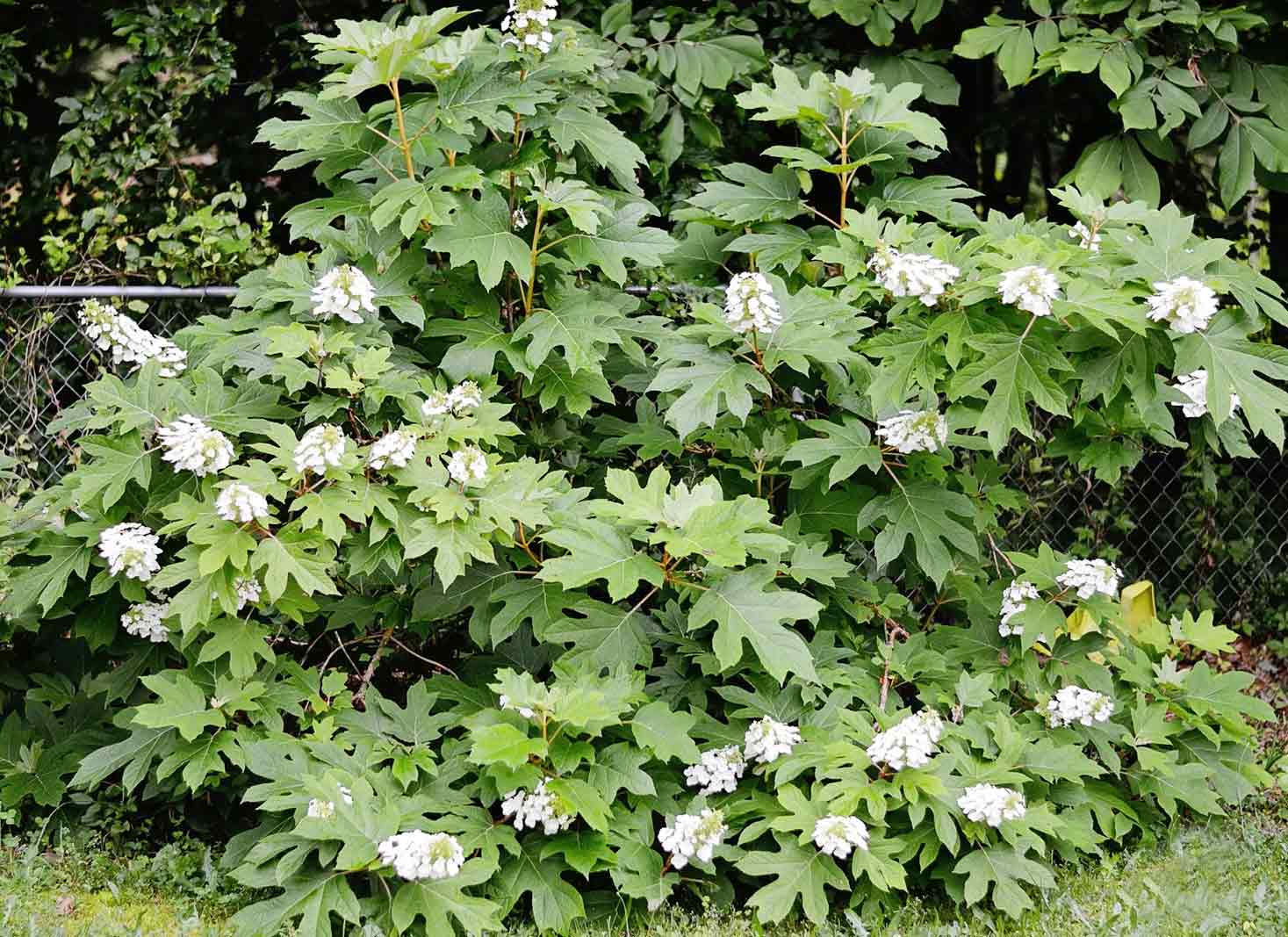
- Scientific name – Hydrangea quercifolia
- Description – this shrub grows very tall and wide with large leaves that resemble those of an oak tree. The leaves change colors in autumn and produce flowers in spring.
- Maturity size – 6- 8 feet tall and 6 ft in width.
- Level of care – minimal. Very good plant for novices or bad gardeners.
- Hardiness Zone – zones 4 – 9
- Best conditions – full sunlight to partial shade, well-drained, and fertile soil.
The oakleaf hydrangea shrub is one of the best shrubs for fence lines. The leaves of the shrub resemble those of the oak plant. They change color in the autumn and produce white flowers in spring. The hydrangea grows to about 6 – 8 feet long and wide on average.
This shrub requires minimal care and is a good choice for non-garden interest paper. They grow well in full to partial sunlight, well-drained, and fertile soil.
8. Lavender Rhododendron Shrub

- Scientific name – Rhododendron catawbiense
- Description; this shrub is a versatile option that can grow anywhere in the United States. The shrub grows moderately and has dense foliage. It produces bright purple flowers in the spring.
- Maturity size – 8 – 10 feet tall and 5 feet in width.
- Level of care – minimal
- Hardiness Zone – zone 4 – 8
- Best conditions – full sunlight to partial shade, well-drained, and fertile soil.
The lavender rhododendron shrub is one of the best shrubs for fence lines. This shrub is one of the most versatile shrubs in the United States. This means the shrub grows in most parts of the USA regardless of weather, cur, etc. The shrub has dense foliage which grows moderately. The lavender rhododendron can grow to about 8 – 10 feet tall and 5 feet in width.
9. Camellia ‘Shi-Shi Gashira’ Shrub
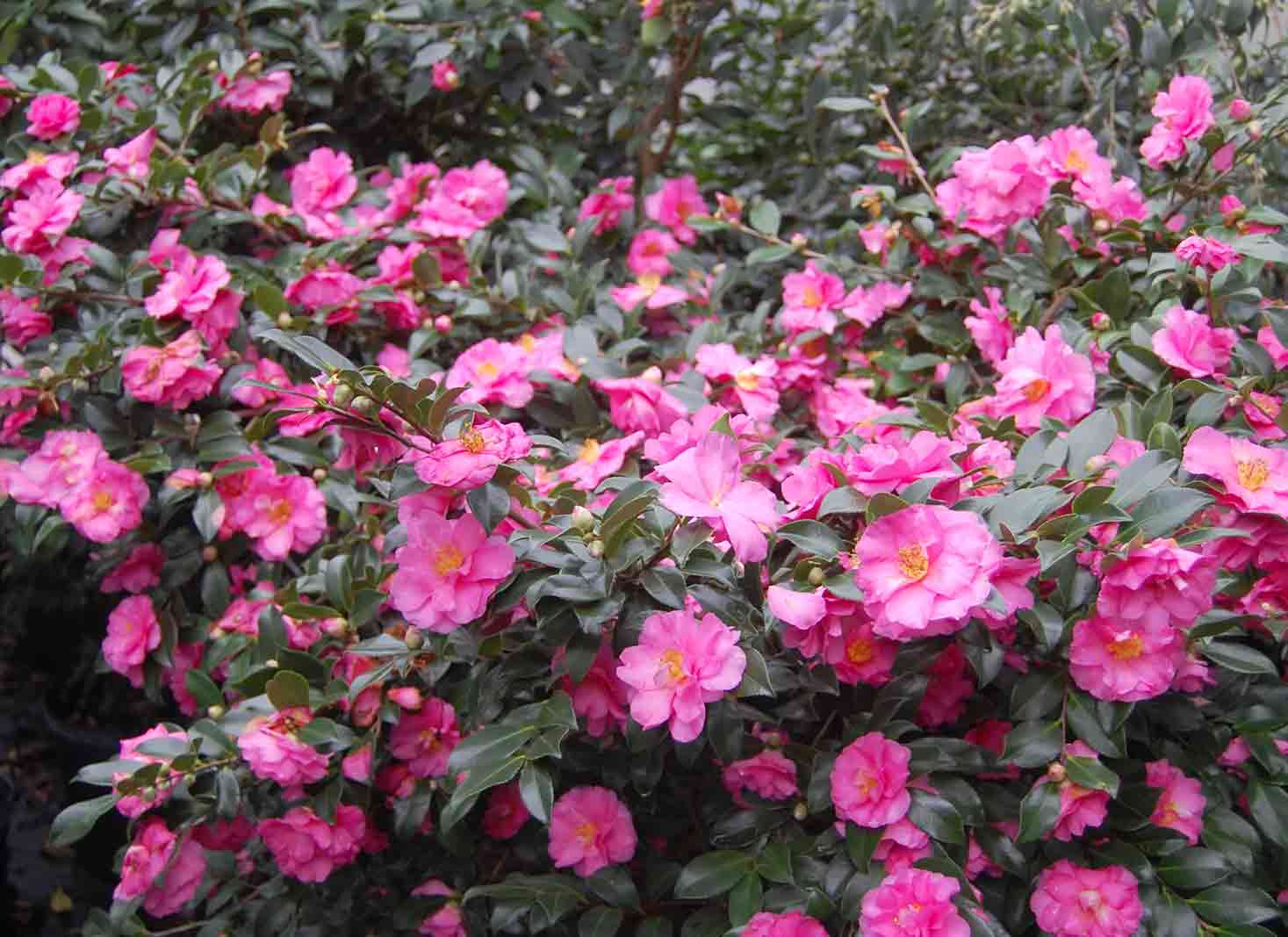
- Scientific name – Camellia sansanqua ‘Shi-Shi Gashira’
- Description – this shrub is a drought-resistant plant suitable for dry areas. They produce these pink flowers with yellow centers which add color to the decor.
- Maturity size – 5ft tall and wide.
- Level of care – minimal
- Hardiness Zone – zones 7 – 9
- Best conditions – full sunlight to partial shade, well-drained, and fertile soil.
The shi-shi gashira shrub is one of the best shrubs for fence lines. This shrub is one of the most resistant shrubs. They can survive for weeks without water and are suitable for areas with droughts and dry seasons.
These shrubs produce beautiful pink flowers that serve to attract men and animals. The shrub grows about 5ft tall and wide. They grow well in hardiness zones 7 – 8 and require minimal care.
10. Tri-Color Dappled Willow
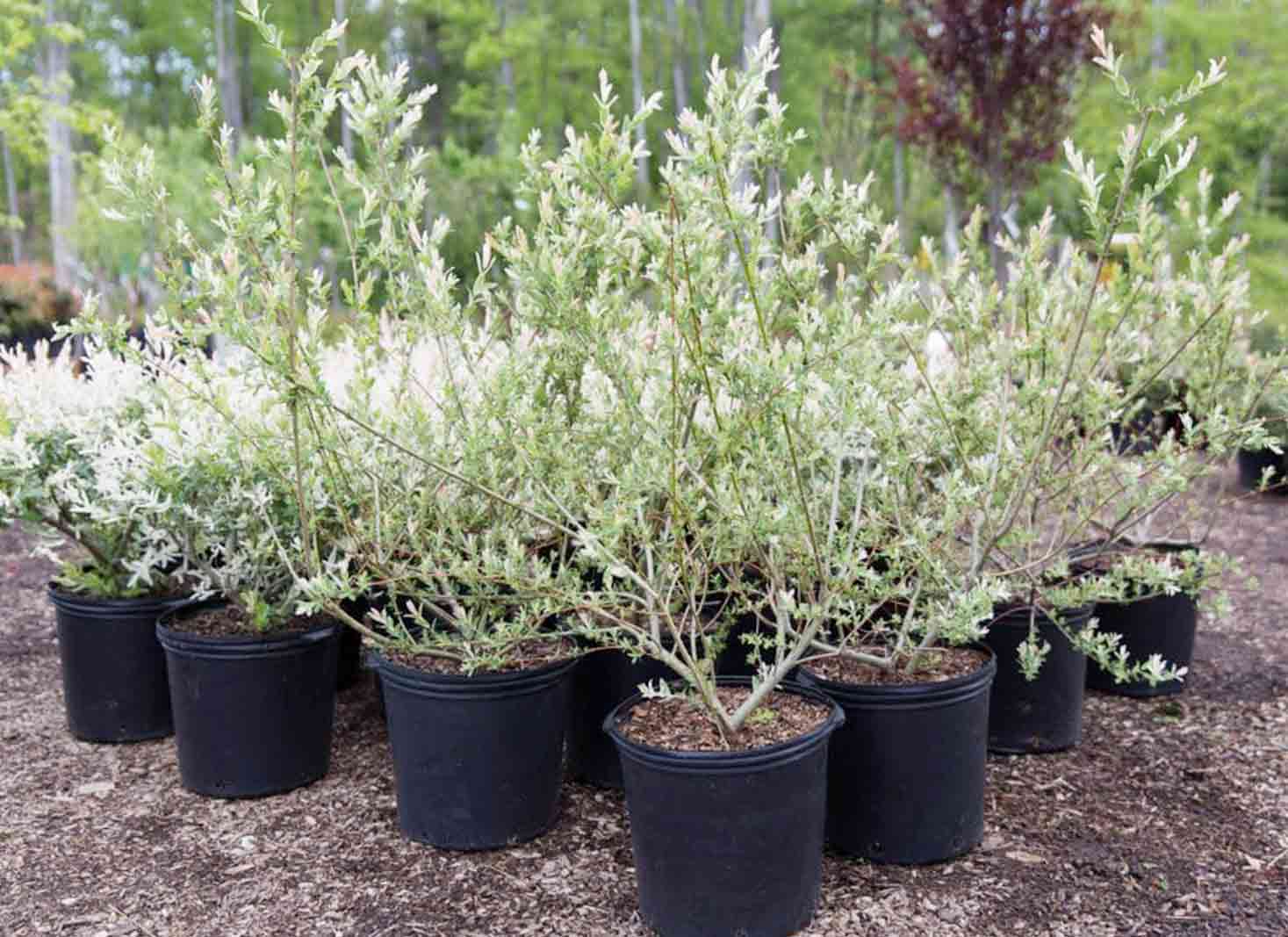
- Scientific name – Salix Integra ‘Hakuro-Nishiki
- Description; this shrub is one of the fastest-growing shrubs in the area. The shrub has three colors which are green, white, and pink. They give the plant its name as the tri-color willow.
- Maturity size – 8 – 10 feet tall and wide.
- Level of care – minimal
- Hardiness Zone – zones 5-9
- Best conditions – grows well in partial sunlight or under shade.
The tri-color dappled willow is one of the best shrubs for fence lines. This shrub is one of the fastest-growing shrubs. They have healing properties, grow to about 8 ft to 10ft tall, and have green, white, and pink suitcases.
The term sheet metal in fencing refers to any metal panels you can use to create a fence. The most popular sheet metals for fencing are corrugated metal sheets and aluminum panels.
Installing sheet metal fences on your land costs $17 to $90 per foot. How much you pay depends on the type of material you choose and the type of fence you want to install. On average, you can expect to pay $700 to $8,000 for a sheet metal fence.
Let us look more into the cost of sheet metal fences.
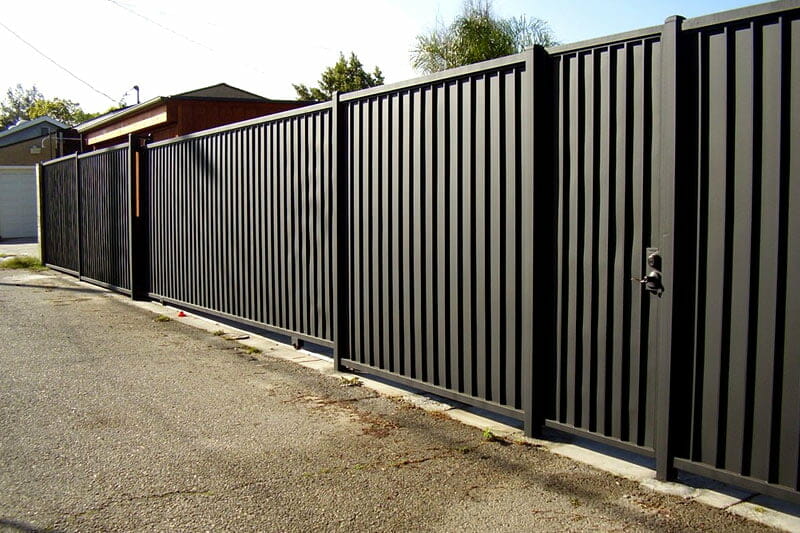
Cost of metal fences by type
The table below shows the average prices for installing metal fences depending on their type.
| Description | Average cost |
|---|---|
| Black aluminum fence | $60 |
| Wrought iron fence | $25 to $35 |
| Steel fence | $30 to $50 |
| Chain link fence | $10 to $30 |
Black aluminum fence
Black aluminum fence panels cost $60 for a 4 by 6-foot panel. It is attractive and easy to install.
Wrought iron fence
Wrought iron fence materials cost about $25 to $35 per linear foot. Depending on the size of your plot, you will pay $2,700 to $5,500.
Cost of installing steel fence
Material costs for a steel fence range from $30 to $50 per linear foot. You can expect to pay from $4,500 to $7,500 for the installation of a steel fence.
A steel fence is durable and will last for up to 100 years. It will require regular sanding and painting for maintenance. It enhances security and is great for a privacy fence.
Cost of installing a chain link fence
A chain-link fence is versatile, easy to install, and can be installed anywhere in your compound.
The average cost of a chain-link fence ranges from $10 to $30 per foot. You will pay from $1,300 to $4,000 for a successful installation of a chain-link fence.
Comparison of sheet metal fences
| Aluminum | Steel | Wrought iron | |
|---|---|---|---|
| Durability | Yes | Yes | Yes |
| Suitable for humid climate | Yes | No | Yes |
| Corrosion-resistant | Yes | May rust | No |
| Maintenance | Little | Requires sanding and painting | Requires painting |
| Strength | Bends and dents easily | Yes | Yes |
| Available in many designs and colors | Yes | Yes | Yes |
| Cost | Affordable | Affordable | Expensive |
Functions of metal sheet fences
- Security
- Aesthetics
- Boundary demarcation
- Keep pets in or out of spaces
- Privacy
- Safety
Cost factors for sheet metal fences
Size of the land
The larger your land, the more it costs to fence it. You need a large number of metal sheets which increases the cost of materials.
Additionally, the size of your land determines how much time is needed to complete fence installation. The larger it is, the longer it takes. Therefore, the more you pay.
Choice of fence materials
The price of the fencing metal sheets varies. For example, aluminum panels cost $50 to $75 per foot, while corrugated metal fences cost $10 to $12 per foot.
The more expensive your fence material the higher the fencing cost.
Type of fence
There are many types of fences you can install. Privacy fences are the most expensive. They are higher than normal fences. Therefore, you will require more linear footage of the sheet metal, which increases the price of the fence.
Permits
Depending on where you live, you may have to apply for a permit to fence your land. Permits increase the cost of fencing.
Consult your local government or pro for more details. The more you pay, for a permit the higher your fencing costs.
DIY or hire a pro
You can DIY or hire a pro for the fence installation. DIY saves you money.
The cost of hiring a pro will vary depending on the materials, condition of the land, and the type of fence you need.
Benefits of using sheet metal fences
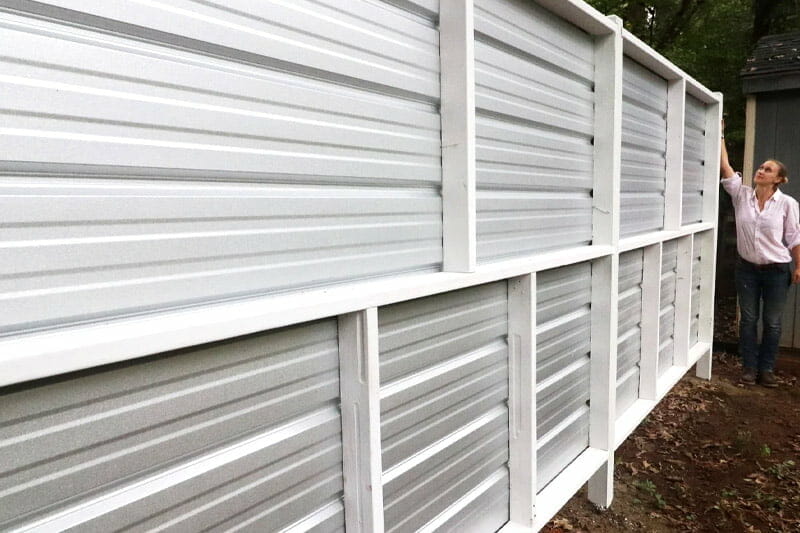
Long lifespan
Sheet metal fences have a long lifespan. They have a useful lifespan of between 25 and 75 years depending on the quality.
If you use cheaper and low-quality metal sheets they may survive for 30 years depending on usage and maintenance.
Minimal maintenance
Sheet metal fences do not need as much attention as other types of fences. Most sheet metals used for fencing are rust and corrosion-resistant.
The most maintenance your sheet metal fence will require is regular cleaning of dirt and dust.
You may also have to paint the fence every 5 to 10 years depending on the quality of the metal sheet and the paint you use.
Ideal investment
With little maintenance, rust and corrosion resistance, and a long lifespan, it is a good investment to use metal sheets for your fencing needs.
Additionally, metal sheets can be recycled and assigned to other uses in the future.
Fast and easy installation
It takes little time and effort to have a metal sheet fence installed properly. You can do it by yourself or hire a professional.
Cost of installing aluminum fence
The average cost to install an aluminum fence is $4,000. You can expect to pay from $2, 000 to $6,000. You will pay $7 to $32 per linear foot for aluminum fencing materials. For labor, the average cost per linear foot to install an aluminum fence is $15 to $40.
DIY vs hiring a professional fence contractor to install a metal fence
Depending on the type of fence you want to install, you can DIY or hire a professional fence contractor.
DIY ensures that you make significant cost savings on fence installation. However, you need to have the right tools or hire them out at a low price.
You also need some knowledge of fence installation and be handy enough to install the sheets firmly.
Depending on the size of your land, you can save up to $1,500 on fence installation costs if you DIY.
Benefits of hiring a pro to install your fence
- Saves you time
- Saves you money since you do not have to hire tools.
- Professionally done.
- There is little room for error. If they do occur, the professional will rectify them at no cost to you.
- They have all the right tools for the job.
How to save money on your fencing project
- Purchase cost-friendly fencing materials.
- Accurate estimates. Ensure you know the exact size of the land you want to fence. It helps you to buy the correct amount of fence materials.
- Choose an affordable style for your fence.
- DIY. .
- You can prepare the land by yourself to save on how much you will pay the professional installers.
- Get three quotes from professional fence installers to find out the right price.
Hire a pro to install your fence
Homegardenguides.com is a free tool to hire professional fence installation service providers.
It connects homeowners to professionals in the following easy steps.
- Enter your zip code at the top of the tool.
- Fill in the form to provide more details about the fence installation service you need.
- You will receive three or four quotes and advice from professional fence installers.
- Contact and hire a service provider that falls within your budget.
